

A lifeline for CPS and other districts is going away

How will schools continue their progress as COVID recovery funding winds down? I PAGE 11

Green Thumb pursuing Sam Adams and listing on stock exchanges
Cannabis companies can’t wait to be listed on U.S. stock exchanges. GTI’s CEO Ben Kovler is looking for a head start.
By John PletzGreen umb Industries’ courtship of Sam Adams brewer Boston Beer Co. may have as much to do with the Chicagobased cannabis company’s interest in U.S. investors as its taste for beer.
After reports that Boston Beer might be in talks to sell, GTI CEO Ben Kovler sent a letter to Boston Beer founder Jim Koch, making his pitch for a merger. Kovler, who posted the letter on social media, talks plenty about
why a slow-growth beer maker should be drawn to GTI’s faster growth and fatter pro t margins.
GTI is the best house in the bad neighborhood occupied by cannabis stocks. At $11.49 per share, the stock trades at about one-third of its peak in March 2021. e numbers are even worse for Chicago-based Verano Holdings and Cresco Labs.
A big reason for the weak stock prices is cannabis companies had to go public in Canada because marijuana remains illegal in the United States. Canadian

stock exchanges are smaller and much more dependent on retail investors, who are far less patient or predictable than the big institutional investors that underpin the U.S. markets. Overly optimistic hopes for legalization of marijuana in the U.S. by those same retail investors have made things even worse.
See GREEN THUMB on Page 27
DAN MCGRATH
The total package of talent, air, energy and sheer love of the game — Willie Mays was the best. Ever.
City’s reputation at stake as big summer begins
A 71-day stretch of high-pro le events is beginning in Chicago
By Danny EckerChicago is about to nd itself in one of the biggest and longestlasting media and tourism spotlights the city has ever seen. Its reputation to visitors, businesses, meeting planners and the rest of the world is at stake.
Next month's second annual NASCAR Chicago Street Race kicks o a 71-day stretch of

NONPROFITS
high-pro le events, festivals and conventions, creating one of the biggest summers for the city's hotel and hospitality market in years. Anchored by eight days of activities during the Democratic National Convention in August, a schedule that also includes Lollapalooza, the Chicago Air & Water Show and September's International Manufacturing Technology Show — the biggest trade show McCormick Place hosts — this summer stands to bring massive crowds to a downtown starved for foot tra c and showcase a city in
See REPUTATION on Page 27
After conducting new research on its provenance, the Art Institute will return an object in its collection to Thailand. PAGE 2

Remembering Willie Mays — The. Best. Ever.
One of the best sports profiles ever written was Richard Ben Cramer’s of Ted Williams for Esquire magazine in 1986.
“Few men try for best ever,” it began, “and Ted Williams is one of those.”
 Dan McGrath
Dan McGrath
Willie Mays never seemed to approach baseball with the furious obsession Ted Williams had for hitting — his was a more joyful pursuit. Sure, there was effort involved — tons of it. But in baseball, “best ever” and Willie Mays was a glorious confluence that occurred with the same inimitably stylish ease with which Mays patrolled center field for two decades.
“His glove,” a rival general manager once said, “is where triples go to die.”
He might lose his cap in the
process, too. Charismatic flair was an essential part of the Willie Mays package. The numbers — 3,293 hits, 660 home runs, 1,909 RBIs, 339 steals, 24 All-Star games, 12 consecutive Gold Gloves, two MVP awards — speak to his greatness. The pure, “I was born to do this” joy with which he played . . . if you saw him, you never forgot him.
Mays was 93 when he died at his Northern California home June 18. A part of our youth died with him. For years he’d been described as baseball’s oldest living Hall of Famer, a title that was a jolt to our memories. In our minds he was forever young. It might be a stretch to credit Mays with helping heal the racial divide in this country, but there is evidence.
Baseball likes to propagate the myth that all was well and good after Jackie Robinson showed up to break the game’s “color line” in 1947. In fact, the opposite was true. The bigots responsible for excluding Black players for
decades saw how good Robinson and the first group of arrivals were and didn’t want them “taking over.” So the next wave — Mays, Henry Aaron, Ernie Banks, Frank Robinson — were subjected to all manner of humiliating indignity as they worked their way through the minor leagues.
But they persevered, and they infused the game with a dynamic blend of speed, power and daring it had never witnessed, with Willie Mays as the exemplar. They made it permissible for white people to embrace Black athletes.
Mays was a rural Southern kid from Westfield, Ala., but New York adored him and he responded in kind, only to have the Giants’ move to San Francisco disrupt his equilibrium.
For all its alleged sophistication, San Francisco can be a parochial town, and Mays’ unease over the move didn’t endear him to the natives, never mind that Candlestick Park subjected him to playing conditions that were
borderline inhumane. Lord knows how many home runs he lost to the winds howling off San Francisco Bay.
Still, he was the game’s best player in its worst ballpark as the organization deteriorated around him. He played out the end of a marvelous string back in New York, with the Mets, after the Giants sent him “home” in a salary dump that they tried to pass off as magnanimous.
It was as if the bumblers running things didn’t appreciate what they had until he was gone. Some years later it occurred to the Giants that they’d never staged a “day” for a true franchise icon. As it was in the planning stages, word got out that Mays had requested a cut of the gate. The event went on as scheduled, but it seemed forced, insincere.
Mays regained his rightful place as a Giant when a Peter Magowan-led group acquired the franchise in 1993. Magowan was a transplanted New Yorker with a
lifelong affinity for Willie Mays. The mailing address for Oracle Park is 24 Willie Mays Plaza. His presence is everywhere, as it should be.
Willie Mays made a lot of us love baseball.
Growing up, most of my compadres were White Sox fans. It was two buses and an el ride from our South Side neighborhood to Wrigley Field, but we always ventured north when the Giants were in town and considered it a privilege.
The players change, the game evolves . . . it’s difficult to compare eras. You can no more see Babe Ruth making that simply impossible play on Vic Wertz’s blast in the 1954 World Series, as Mays did, than you can see Mays pitching 29 and two-thirds consecutive scoreless innings over two World Series, as Ruth did.
But as the total package — talent, flair, energy, sheer love of the game — Willie Mays was the best. Ever. I doubt we’ll see another. Ever.
Art Institute returning object in its collection to Thailand
The musuem is giving back an item previously thought to be from CambodiaBy Brandon Dupré
The Art Institute of Chicago will return an item in its collection to Thailand after conducting new research on its provenance.
The object, a 12th-century fragment of a pilaster previously attributed to Cambodia, has now been identified as originating from the Phanom Rung temple in northeast Thailand, the museum said in a news release June 18.
“We are grateful for our close collaboration with the Fine Arts Department in Thailand and are honored to take this step in what I hope is a long and productive partnership,” James Rondeau, president and Eloise W. Martin Director of the Art Institute of Chicago, said in a statement. “We are deeply committed to fostering an ongoing relationship and continuing to learn from each other.”
The announcement comes as the museum is locked in a high-profile legal battle with the Manhattan District Attorney’s Office over the origin of a drawing believed to have been stolen during the Holocaust.
New York officials contend the Art Institute applied “willful blindness” to clearly stolen property in “one of the most flagrant Nazi-era lootings of a Holocaust victim’s cultural property yet uncovered.” The museum has adamantly defended its ownership, calling the district attorney’s claims “factually unsupported and wrong.”
The June 18 announcement also comes more than a year after Crain’s and ProPublica published an investigation into the museum’s holdings, identifying at least four pieces from the museum’s Alsdorf collection that may have been looted from Nepal and exported illegally, including an inscribed gilt-copper necklace that the Nepali government wants returned.
The Alsdorf collection also contains incomplete provenance by modern standards, according to a national online registry of museum pieces. While some museums have taken a more expansive approach to weeding out looted artifacts, Crain’s and ProPublica reported, the Art Institute lags behind.
The museum returned another object, known as the Vishnu lintel, from the Phanom Rung temple back to Thailand in 1988.
In the news release June 18, the museum said “provenance research remains an institutional priority for the Art Institute,” adding that it has grown its provenance research team and established a task force, made up of senior leaders at the museum, to help guide and assist the museum on provenance matters.
“We are living up to our commitment to proactively and rigorously research works in our collection, and transfer the ownership of objects that research demonstrates should be returned to their country of origin,” Sarah Guernsey, deputy director and senior vice president for
Art Institute, said in a statement. A spokesperson for the museum said the object first entered the museum on a long-term loan nearly 30 years ago and was later acquired in 2017.








Probe of UAW president threatens union’s image
Shawn Fain hoped to close the door on the organization’s scandalplagued past, but a new investigation into alleged misconduct could erode member trust and hamper organizing efforts I By
UAW President Shawn Fain and his fellow reform caucus candidates who swept into power less than two years ago were supposed to represent a fresh start for a union plagued by scandal.
But the revelation that the UAW’s court-ordered federal monitor is investigating Fain — who is accused of retaliating against other leaders and obstructing the probe — tarnishes that image and complicates his ambitious push to organize auto workers in southern states where skepticism of union leadership abounds.
The monitor, Neil Barofsky, said in a June 10 filing that he is looking into allegations that Fain punished Secretary-Treasurer Margaret Mock and Vice President Rich Boyer by stripping them of key assignments. Barofsky said the union had not produced requested
Michael Martinez“The real cost to the union is that it will drain their time and energy. It makes it more difficult to focus on the
issues.”
Marick Masters, a labor expert at Wayne State University in Detroit
City Council plans to turn data pain into tax-revenue gain
envious of the data center boom in the suburbs, Ald. Gilbert Villegas thinks he has the ticket to boost the city’s share of the pie
By John PletzEnvious of the data center boom in the suburbs and elsewhere around the country, Ald. Gilbert Villegas, 36th, thinks he has the ticket to boost the city’s share of the pie and increase property tax revenue.
Villegas, who chairs the City Council’s Committee on Economic, Capital & Technology Development, proposes 8% of the city’s new data spending go to vendors who are required to store the information in Chicago facilities. He predicts the ordinance would spur data center construction in the city that could one day generate $50 million to $100 million a year in property tax revenue, as well as jobs to build the facilities.
“It’s an opportunity to create revenue without having to go to the taxpayer,” says Villegas. “It brings property online and invests in communities that haven’t benefited from tech investments.”
Villegas is hoping the city can replicate the success of Loudoun County, Va., which has one of the nation’s largest concentrations of data centers just outside Washington, D.C. The county gets $800 million a year in taxes from property and equipment related to data centers, which it says has led to a reduction in the overall tax rate over the past 12 years, according to a presentation at a committee hearing in February.
Data centers are one of the fastest-growing sectors of real
Would-be CEO seeks business to run for rest
Fresh off the sale of her first company, Lia Majid is on the hunt for another — a pursuit that’s part of a larger industry trend
By Mark WeinraubFresh off the sale of her first business, Lia Majid is on the hunt for another Chicago company, any company.
“I’m agnostic about the industry,” Majid said. “If you want to find a business to buy in a specific region in any sort of reasonable time frame, you cannot be too picky.”
She has targeted companies with annual EBITDA of $600,000 to $2 million, which would translate to about $2 million and $20 million in revenue, and six to 100 employees.
This is not her first rodeo. She is part of a trend of would-be CEOs striking out on their own in pursuit of a business to run.
Backed by the Search Fund Accelerator, a team of investors who help entrepreneurs home in on their targets, Majid bought Acorn Legal Solutions in 2017. The $8.5 million deal capped an 18-month search Majid launched immediately after graduating from business school at Northwestern University’s Kellogg School of Management. Majid sold Acorn to a competitor, litigation support services provider Array, in November
2023, with a portion of the proceeds going back to the Search Fund Accelerator.
“I wanted the last one to be one I held forever, too, but I had investors,” Majid said.
This time around, she is doing it on her own, a process she started at the end of April and expects could last up to two years.
According to a study conducted by the Stanford Graduate School of Business on search funds, the average length of a search is 17 months. In the study, which Stanford conducts once
estate, fueled by rising demand for artificial intelligence, video streaming and use of mobile devices. Adding to the growth is a state tax incentive for data centers that passed in 2019.
“It’s an opportunity to create revenue without having to go to the taxpayer. It brings property online and invests in communities that haven’t benefited from tech investments.”
Ald. Gilbert Villegas, 36th
The Chicago region is the nation’s third-largest market for data centers, the oftenmassive buildings that house computer servers required to run websites, process stock trades or route wireless calls and data.
But much of the local construction boom has taken place in the suburbs near O’Hare Airport, where land is cheaper and access to electricity and optical-fiber networks is plentiful. Despite having 29% of the Chicago metro area’s population, the city has just 21% of the region’s data center capacity, according to Intelligence &

United gears up for DNC with more flights
Airlines and restaurants are preparing for a boost from 50,000 convention-goers in two months
By John PletzUnited Airlines says it’s adding 118 flights at Chicago O’Hare International Airport for the Democratic National Convention in August.
The convention would boost United’s total 6% to more than 530 flights a day at O’Hare on peak days, which would be its busiest schedule since before the COVID-19 pandemic, the airline says.
The biggest increase comes, not surprisingly, between O’Hare and Ronald Reagan Washington National Airport, with 38 more flights, or a 40% increase.
United, the largest carrier at O’Hare, also is adding flights between Albany, N.Y.; Atlanta; Austin, Texas; Baltimore, Boston, Portland, Ore.; Phoenix, Sacramento, Calif.; San Diego, San Jose, Calif.; and Seattle.
Milwaukee, which is hosting the Republican National Convention next month, will get an even bigger proportional bump in service. United is adding 72 flights to Milwaukee, a much smaller airport, which translates into a 75% increase in flights. The carrier estimates that will result in about 5,000 more travelers.
Southwest, the largest carrier at Chicago Midway International Airport and which also serves O’Hare, says it’s not adding flights for the conventions.
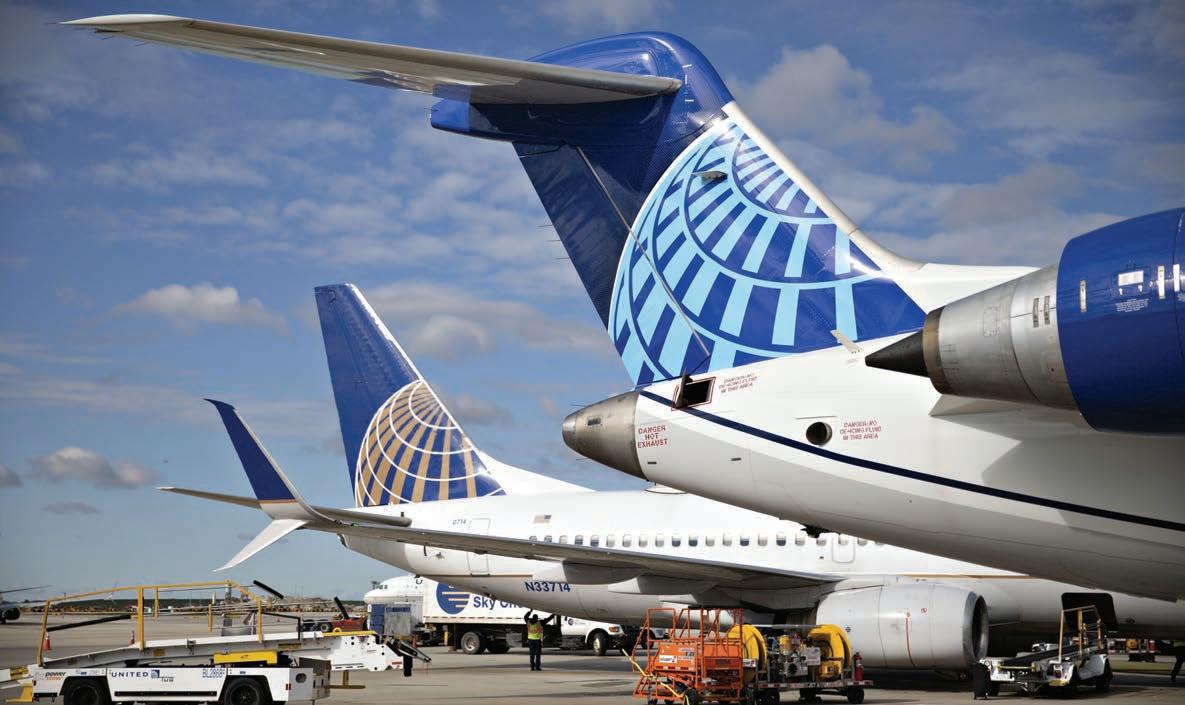
American, the second-largest carrier at O’Hare, also said it’s not increasing its schedule for the convention.
Others expecting increases
Air travel is just one way the conventions will pay off for host cities. Hotels and restaurants expect to see increases in busi -
ness. The Chicago 2024 Host Committee expects 50,000 delegates and other visitors to attend the Democratic National Convention from Aug. 19 to 22. While the convention itself will be held at McCormick Place and the United Center, the impact will be widespread.
“The West Loop, Fulton Mar-
ket and River North and the Gold Coast are the hot areas,” says Sam Toia, president of the Illinois Restaurant Association.
As the convention draws closer, it’s beginning to translate into bookings for restaurants.
“There was a lot of chatter early, but recently they started to put pen to paper,” Toia says.
“Restaurant operators will tell you June is a lot of folks’ best month: You have all graduations, the James Beard Awards. May is usually second-best because of the National Restaurant Association Show. August is usually third-busiest, but people are saying August might be their best month this year.”
Aon launches insurance package to spur rebuilding in Ukraine
The insurance giant will act as a broker for a $50 million fund of insurance policies to cover damages for companies operating in Ukraine
By Mark WeinraubAon and the U.S. International Development Finance Corp. have put together a $350 million insurance package to spur business development in wartorn Ukraine.
The insurance giant, working with the Ukraine Ministry of Development, will act as a broker for a $50 million fund to build a portfolio of war risk insurance policies to cover damages for companies operating in Ukraine. The $50 million will be distributed by ARX, a Ukrainian subsidiary of Fairfax Financial Holdings Limited.
The Development Finance Corp. will act as the reinsurer of the $50 million for insurance companies.
“This groundbreaking facility will enable the local insurance industry to appropriately price risk and draw much needed new capital into Ukraine, while
creating capacity and capability in the country to support reconstruction,” Aon President Eric Anderson said at the Ukraine Recovery Conference in Berlin.
Aon and the Development Finance Corp. also collaborated on an additional $300 million in insurance designed for agriculture and health care in Ukraine, according to a statement released by Aon, which is headquartered in London but oversees its U.S. business in Chicago.
“The private sector is critical to Ukraine’s recovery, and we are leveraging our unique tools, especially political risk insurance, to build investor confidence in Ukraine at this critical moment,”
Development Finance Corp.
CEO Scott Nathan said.
No details were provided on how the funding for the $350 million will be divided.
The insurance deal comes following President Joe Biden’s appointment in 2023 of former

Commerce
economic recovery
“As we looked for opportunities to support the Ukrainian economy, we recognized that a robust insurance market was
essential to attracting investment in the country,” Pritzker said in a written statement announcing the move.







Unfinished school next to St. Regis goes up for sale
Chicago-based Power Construction leads a group of lienholders that seized the GEMS World Academy Chicago high school at 355 E. Wacker Drive last year to resolve a foreclosure lawsuit, and is now trying to unload it
By Danny EckerAn unfinished private school next to Chicago’s third-tallest tower has gone up for sale roughly a year after the contractor hired to build it seized the property.
A venture of Chicago-based Power Construction has hired real estate services firm CBRE to seek a buyer for the 154,000-square-foot building at 355 E. Wacker Drive, according to a marketing flyer. Power leads a group of lienholders that took control of the building last summer to resolve a foreclosure lawsuit they filed against GEMS World Academy, Cook County property records show.
GEMS operates a school with students ranging from preschool to 8th grade just steps from the Wacker Drive building at 350 E. South Water St., and began developing the Wacker Drive building in 2018 as a future high school. But after investing roughly $85 million in the project, GEMS stopped paying contractors in 2019 and ultimately surrendered the building to a consortium of more than a dozen unpaid lienholders, according to Power President & CEO Jeff Geier.
Now CBRE is framing the property — which is roughly 80% completed — as a “customizable building” in the Lakeshore East neighborhood that could be purchased for a fraction of the money GEMS put into it. There is no specific asking price, but sources familiar with the listing said Power and other lienholders are seeking to recover the nearly $25 million they were collectively owed for work on the building.
‘Blank palette’
“It’s a brand new building that’s just a blank palette for someone to reimagine it,” said Geier, who called the seizure of a substantially-finished structure a “first” for Chicago-based Power in the contractor’s 98-year history. “It was a spare-no-expense building.”
It’s a rare offering of an unfinished, high-end building in a prominent location along the Chicago River. Buying the building at a steep discount to the

money spent on it could be compelling for real estate investors, though it’s a difficult time to land financing for any large commercial property purchase downtown that doesn’t have steady cash flow already tied to it.
The listing also spotlights the severe financial hit Dubai-based GEMS Education took on its Chicago property, which was its first U.S. location when it opened in 2014. The high school was designed to accommodate more than 1,400 students moving up from the lower school. Lower school students pay annual tuition ranging from $27,000 to $37,500 depending on the grade, according to the GEMS website.
GEMS Chief Operating Officer Jamee Thrush said “financing obstacles” and the COVID-19 pandemic ultimately forced the school to abandon plans for the Wacker Drive building and shut down its Chicago high school program. Its local high school-aged students had been attending other offsite
locations in recent years, she said, with 11 students recently graduating from its final Chicago high school class.
“A lot of things made it challenging,” Thrush said of the loss of the Wacker Drive building and the decision to shut down the local high school program. “Resolving our debt issue and having stability for preschool through 8th grade was something we were really happy about, and we’re really excited to be building upon. We obviously didn’t make that decision lightly.”
The lower school is expected to have close to 300 students for the 2024-25 school year, according to Thrush.
GEMS had sought a financing solution in 2020 when it put its lower school building and the Wacker Drive property on the market as a sale-leaseback offering, hoping to pull in $150 million for the properties and sign a longterm deal to rent them back. Proceeds from the sale would have been used in part to finish the
Wacker Drive construction.
But GEMS didn’t find a buyer.
Geier said Power terminated its construction contract that year and subsequently filed a foreclosure lawsuit that was settled in 2023 with lienholders taking ownership of the unfinished building.
New 10-year lease
As part of that settlement, the school signed a new 10-year ground lease with New Yorkbased real estate firm W.P. Carey that allows GEMS to keep operating its lower school. W.P. Carey owns the land beneath that GEMS building, while GEMS owns the building itself and pays an undisclosed annual rent to W.P. Carey under the ground lease.
A spokeswoman for W.P. Carey did not respond to a request for comment.
Geier said another school could step up to buy the Wacker Drive building and finish the interior, which could cost roughly $15 million to $20 million de-
pending on the specifics of the build-out. The building is designed to include classrooms, laboratory space, a full-size gymnasium, a cafeteria, a 550-seat auditorium with stadium seating and a rooftop terrace with sport courts, according to CBRE marketing materials. The flyer plays up other possible uses such as upscale offices, entertainment uses or even a dramatic overhaul of the existing building into apartments.
The property is adjacent to the 101-story St. Regis Chicago, a luxury condo and hotel skyscraper that became the city’s third-tallest building when it was completed in 2020. The tower includes the 192-room St. Regis Chicago hotel on its first 11 floors, which opened last year and offers the priciest hotel room rates in the city.
The GEMS building isn’t the first high-profile downtown project that was partially completed before developers ran out of money or abandoned plans.
Elsewhere along the Chicago River at 111 W. Wacker Drive, a developer’s plan for a 90-story tower that included luxury condominiums and a Shangri-La hotel was stalled in 2008 with just 28 stories completed. Chicago developer Related Midwest eventually took over that project in 2012 and finished the tower as a 60-story apartment building.
Related in 2014 also picked up the infamous Chicago Spire site at 400 N. Lake Shore Drive, where developer Garrett Kelleher had begun work in 2007 on what was meant to be a 150-story residential tower, the tallest in the western hemisphere. But after digging a 76-foot-deep foundation, Kelleher’s financing dried up with the financial crisis in 2008 and the property ultimately wound up in bankruptcy court in 2013. Related began construction earlier this year on a new 72-story apartment tower on the site.
CBRE brokers Todd Lippman, Guy Ponticiello and Blake Johnson are marketing the 355 E. Wacker building for sale.
AbbVie inks deal potentially worth $1.7 billion for new IBD drug
By Jon AsplundAbbVie’s latest move in inflammatory bowel disease treatments is a licensing agreement to develop a next generation antibody engineered by Beijing-based FutureGen.
The terms of the deal call for North Chicago-based AbbVie to pay FutureGen $150 million upfront, with additional payments totaling $1.56 billion based on clinical development, regulatory and commercial milestones. FutureGen may also see tiered royalties on net sales, AbbVie
said in a press release.
In return, AbbVie receives an exclusive global license to develop, manufacture and commercialize the TL1A antibody currently called FG-M701.
The treatment, currently in preclinical development, is a fully human monoclonal antibody targeting TL1A, a clinically validated target in inflammatory bowel diseases like ulcerative colitis and Crohn’s disease, the release said.
AbbVie said the new treatment has the potential for greater efficacy and less frequent
dosing compared to first-generation TL1A antibodies.
“The prevalence of IBD continues to increase, and many people living with ulcerative colitis and Crohn’s disease do not respond to current therapies,” Jonathon Sedgwick, senior vice president and global head of discovery research at AbbVie, said in the release. “AbbVie’s mission to raise the standard of care includes the pursuit of transformative therapies that help more patients living with autoimmune diseases achieve remission.”
“We believe that AbbVie is a
great partner, with the ability to apply their expertise and global scale to realizing FG-M701’s therapeutic potential and rapidly advancing this therapy for patients suffering from IBD,” Zhaoyu Jin, founder and chief executive officer of FutureGen Biopharmaceutical, said in the release.
AbbVie is already a leader in inflammation and autoimmune therapies, with immunology being its largest therapeutic area. Two of its best selling immunology drugs, Humira and Rinvoq, are indicated for treating ulcerative colitis and Crohn’s, and its other anti-inflam-
matory, Skyrizi, is currently indicated to treat Crohn’s.
During a presentation June 12 at Goldman Sachs’ Annual Global Healthcare Conference, Robert Michael, current AbbVie president and chief operating officer, expressed confidence in AbbVie’s immunology products, saying he expects an ulcerative colitis indication for Skyrizi in the future and that maximizing the potential of Skyrizi and Rinvoq is a priority for the company.
Michael has been tapped to move into the CEO role July 1, succeeding Richard Gonzalez.

Look inside a Loop hotel redesign targeting millennial travelers
By Jack GrieveSouth Korea’s largest retailer snagged a deal in its 2022 purchase of one of downtown Chicago’s most recognizable hotel buildings. The seller, doubtful of the city’s post-pandemic future, was eager to unload the 225 N. Wabash Ave. property and exit the downtown market.
But Lotte Hotels & Resorts, which acquired the 191-key Kimpton Hotel Monaco Chicago for a relatively cheap $36 million, was bullish on the Loop’s recovery. Even if business travel, long a driver of downtown hospitality demand, did not return in full force, the group believed it had a new hotel model that could succeed in a reimagined post-pandemic Chicago.
The Seoul-based company is now rolling out the red carpet to unveil that vision.
Instead of bringing Chicago one of its “City Hotel” concepts designed specifically with business travelers in mind, Lotte outfitted the Wabash Avenue property under its L7 brand, which sells more of a “lifestyle” stay.
“We are not 90% business and 10% leisure; it is a much more balanced fit than that,” said General Manager Adam Gurgiolo.
That approach could prove pivotal for success in the changing downtown landscape. Not only does business travel lag what it was in 2019, the habits and desires among folks
traveling for work have also evolved. Travelers are routinely embarking on longer trips and seeking out hotels where they can work and leisure in the same space.
“We are all about comfort,” Gurgiolo said of the four-star hotel. “We want them to really feel at home in their normal routines.”
As for what sets this redesign apart, guests can expect wellness-centric amenities like yoga mats, stretch bands, small weights and face masks available in the rooms. Art at the hotel is intended to tell a “cultural story” of the city.
For locals, perhaps the most attractive aspect of the redesigned space is not the hotel itself but rather the restaurant moving downstairs. Lotte has tapped Executive Chef Andrew Lim and partners Thomas Oh and Alvin Kang of Perilla Fare in the West Loop to bring their second rendition of the Korean American brand to the ground floor of the hotel. The Michelin Bib Gourmand-recognized team is expected to open the restaurant later this summer.
The Chicago location is the first U.S. edition of the L7 concept. Three other L7 hotels already operate in Seoul under this lifestyle-centric model, and another location opened in Vietnam last year. A fourth South Korea location is expected to open this summer. Lotte also operates a five-star hotel in Manhattan.
























EDITORIAL
Chicago has a stake in the Southwest C-suite saga
Although Southwest Airlines is based in Dallas, Chicago has an interest in how a current battle over control of the discount carrier plays out.
Southwest is the largest carrier at Midway International Airport, making Chicago a rare aviation hub that’s served by three major airlines, alongside United and American at O’Hare International Airport. Southwest helped keep Midway viable after it arrived in 1985 and helps keep a lid on fares in the market. More recently, Southwest expanded to O’Hare as well.
That’s why frequent flyers out of Midway rightly pay attention to situations like the current dust-up surrounding Southwest’s C-suite. Anyone who lived through Southwest’s Christmas holiday meltdown — which left thousands of travelers stranded for days at the end of 2022 and turned Midway’s halls into an ocean of unclaimed luggage — can tell you that when Southwest sneezes, Chicago travelers catch a cold.
Now an activist hedge fund, Elliott Management, has amassed a $1.9 billion stake in Southwest and is pushing for leadership changes at the airline, whose stock has lagged big rivals.
Elliott is seeking to replace Southwest CEO Bob Jordan and Chairman Gary Kelly with outside candidates, arguing that Southwest has slipped from a best-inclass airline to one of the industry’s dogs. Indeed, Southwest shares have lost about half their value versus three years ago.
PERSONAL VIEW

Elliott’s push gained momentum on June 12, when a second major Southwest investor, Artisan Partners Limited Partnership, the airline’s ninth-largest shareholder, urged the board to “reconstitute itself and upgrade company leadership” in order to fairly assess
the path forward.
Artisan’s letter came hours after Jordan said he would resist Elliott’s call to step down. Jordan is also cool to some of the ideas that have been floated to revive the airline’s fortunes, including ending its popular “bags fly free” policy.
Southwest is alone among U.S. carriers in letting passengers check two bags at no cost, giving up the potential for millions in revenue in exchange for a service that sets it apart from rivals — and data shows a significant portion of Southwest’s customers favor the airline because of that policy.
Jordan stands by that policy, in part, because he is someone who rose through the company ranks to the top job — something that isn’t unusual in the aviation business, as it happens — though that close affiliation with the brand and all it stands for is actually one building block in Elliott’s case against his leadership. Southwest’s board and C-suite are too insulated. Fresh thinking is required.
No matter who wins this battle — and former United CEO Oscar Munoz argued in a June 21 interview with Crain’s that the hedge fund attack might actually help Jordan to usher in changes that Southwest lifers might otherwise reject — there’s little doubt Chicago has a stake in the outcome.
One thing is certain: City Hall officials need to pay attention to the ongoing proxy war. It’s possible new leadership may soon sit across the table from Chicago aviation officials in all sorts of important conversations regarding air service in this region. The Southwest spectacle also points up another issue that merits City Hall’s consideration: How dependent on a single carrier should Midway really be?
Here’s a big opportunity to tackle the labor shortage
Last year, according to Manpower Group, three-quarters of U.S. employers reported difficulty finding talent — a 17-year high. This isn’t a temporary problem; demographic data predicts that labor shortages will grow in years to come. One obvious response is to expand the talent pools that businesses draw from, especially those that have been underutilized or excluded historically.
Individuals with criminal records present a big opportunity to address this challenge. Tens of millions of Americans have been involved with the criminal legal system — as many as 1 in 3 adults, by some estimates. They are a diverse group that includes individuals with a wide variety of work skills and readiness, from advanced degrees and technical and trades experience to entry-level experience.
They can be an important talent source, but many employers have policies and practices that unnecessarily exclude qualified applicants. Research by the Rand Corporation and others demonstrates that the perceptions underlying these policies — for example, the likelihood of re-offending — are not supported by the facts.
One important asset in our region is a rich ecosystem of organizations providing services and support to help individuals with records find and keep jobs, preparing them to add their skills and drive to our workforce. For decades, these organizations, both community-based and citywide, have run sophisticated programs that address the varied barriers individuals with records face.
Businesses of all sizes are beginning to change their practices to remove barriers to hiring and retention. By taking those steps and developing partnerships with service providers, companies in our region are unlocking opportunities at a new scale.
Some examples:
Discover Financial Services redesigned its internal background check process to customize the experience for each applicant and role and provided more information about its process on its website to encourage applications.
Advocate Health Care launched a program to hire returning residents; it’s been so successful that the system’s leaders are planning to expand it to other
hospitals in the Midwest.
To make sure prospective applicants with records know they should apply, the University of Chicago added specific language to every job posting.
JPMorgan Chase revamped multiple internal policies and processes; as a result, 10% of new hires annually have records. Chase is also leading policy efforts to modernize federal banking rules to enable more people with records to start careers in financial services.
They and other employers are showing their peers how it can be done.
To build on this momentum, our organizations have joined forces in a coordinated effort to enable more businesses to change their practices, bolstered by effective training and support services for applicants, hiring managers and HR executives. We share effective approaches; support companies in deciding where to begin and identifying which practices to change; and connect employers with partners that can help identify qualified applicants.
Our mutual goal is to make the Chicago region a leader in fair chance hiring, to
give our businesses a competitive advantage in the search for talent and give more of our residents the employment opportunities they need to thrive.
Success will not come easily; the longstanding barriers to hiring individuals with records are complex and deeply embedded in corporate structures. But the experiences of our organizations and many others show that success is possible. The strategies we are pursuing are truly “win-win-win” for individuals, businesses and our communities.
We invite businesses to join us in what we believe can be a transformative effort to build a fully inclusive and thriving regional economy by providing a fair chance to all.
Brian Fabes is managing director of the Corporate Coalition of Chicago.
Kathleen St. Louis Caliento is president and CEO of the Cara Collective.
Matthew Bruce is executive director of the Chicagoland Workforce Funder Alliance. Bridget Altenburg is CEO of Skills for Chicagoland’s Future.
To eliminate food deserts, consider public grocery stores
Everyone needs access to a grocery store and fresh food. This might seem obvious, yet today, 40 million Americans live in food deserts without access to fairly priced healthy food, including 3 million people in Illinois.
Limited access to a grocery or convenience store with fresh food is not just about inconvenience; it is often an issue of life and death. Areas considered food deserts face far higher rates of chronic disease, poverty, and shorter life spans.

Ameya Pawar, a former member of the Chicago City Council, is a senior adviser to the Economic Security Project, CEO of Okay Cannabis and an appointee to the Illinois Finance Authority/ Climate Bank.
Solving the problem of food deserts has been a thorny issue for policymakers, who to their credit have not sat on their hands. To lure chain grocers back into their communities, many have tried tax credits, public money and other incentives. But all too often, large grocery chains will take those subsidies, open up briefly and then pack up shop a short time later because serving a food desert community doesn't fit into their business model.
Illinois might be a bright spot in an otherwise bleak landscape, in the form of a law signed last year by Gov. J.B. Pritzker called the Illinois Grocery Initiative. This legislation created a grant program with two funding rounds. The second round, which opened in April, could change the national discourse around food deserts because it channels grants to communities interested in a relatively new solution: a public grocery store.
Public grocery stores meet the community's needs in the vacuum of the market's failure to account for unchecked mergers and acquisitions in the grocery sector. For perspective, Walmart, Kroger, Albertsons and Costco control more than 40% of the U.S. grocery market. As these retail giants have amassed market power, they have closed stores and forced smaller grocers out of business, impacting everywhere from rural communities like the town of Venice, Ill., to urban areas like the South Side of Chicago. A public grocery store might sound like a utopian idea, but it has recently proven successful in other parts of the country, primarily in conservative rural communities. These stores function like privately owned stores and carry the same products, but operate more like a public utility. A new study from the Vanderbilt University Policy Accelerator analyzed public grocery options utilized in small towns in Florida, Kansas and elsewhere and found them to be a "workable way to address growing food insecurity in the United States."
And a public grocery store might seem new, but public options aren't. They have been around for decades.
Public options exist for broadband, utilities, banking, grain elevators and other enterprises. For instance, the city of Chattanooga, Tenn., operates one of the country's most reliable and fastest public broadband services. The state of North Dakota owns and operates a bank and grain elevator. The city of Chicago owns and operates O'Hare and Midway airports.
The list goes on. In most cases, governments launched public options as common-sense enterprises to meet a community's needs.
But despite ample evidence of
their efficacy, they have yet to be taken seriously as a tool to tackle food deserts. And that's unfortunate, because where there are food deserts, there are almost always banking, child care, health care and every other type of desert, too. Public options could be a potent force to tackle them.
This is where Illinois is flipping the script.
Pritzker's Illinois Grocery Initiative embeds public options within an array of holistic approaches to increase access to food in food deserts, which is why it passed
with bipartisan support. This approach can help activists and economists across the political spectrum see the bigger picture.
Policymakers need tools like the governor's $500 million closing fund, which enabled the administration to use public money to land a $2 billion Gotion megafactory in Manteno. Policymakers, at times, will also need to tap public options when the markets don't meet the needs of communities.
Case in point, the Illinois Finance Authority/Climate Bank — a public bank — is in line to receive
hundreds of millions to deploy federal climate funds to formerly redlined communities for projects that banks haven't financed.
This initiative offers a robust policy toolkit that includes incentives, subsidies, and public options so policymakers can shape the market. The conversation shouldn't be about free markets or socialism; it's about building equitable markets.
Our responsibility to communities is to ensure they have the goods and services they need to grow and thrive. This is why the Illinois Grocery Initiative holds much promise.
PEOPLE ON THE MOVE
ARCHITECTURE / DESIGN
Hatfield Group Engineering, New York / Chicago
FINANCIAL SERVICES
Wintrust Financial Corporation, Rosemont
HEALTH CARE
Loyola University Medical Center, Maywood
Laner Muchin, Chicago


Koz Sowlat, PE, SE and Robert J. Diebold, PE, SE, now lead New York City-based Hatfield Group Engineering’s (HGE) new Chicago office. The two worldclass structural engineers founded and co-led their firm, Sowlat Structural Engineers, since 2004. HGE Chicago was established in 2024 to better serve HGE clients, leveraging Koz Sowlat and Rob Diebold’s expertise and bringing HGE’s structural, MEP/FP, and facade engineering services to the Midwest. Sowlat, Diebold, and HGE founding partner, Erleen Hatfield, PE, FAIA, F. ASCE, worked together while at Perkins and Will and Thornton Tomasetti and are reunited to provide their structural expertise in the design of large, complex buildings with fast-track schedules, leading to high-quality built projects.
FINANCIAL SERVICES
Byline Bank, Chicago
Byline Bank’s Commercial Banking group welcomes David Prochnow and Joe Wolsfeld. As Managing Director, Head of Fintech Solutions & Partner Strategy, David oversees the strategic direction of the Fintech Payments practice, including BaaS sponsorship and embedded finance solutions. He has over 15 years of experience leading banking solutions for the fintech industry, most recently at Fifth Third Bank and MB Financial Bank. As Managing Director, Head of Fintech Banking, Joe oversees goto-market, business development and relationship management for the Fintech Banking division. Joe has over 19 years of commercial banking and payments experience, most recently at Fifth Third Bank and MB Financial Bank.


Wolsfeld
Wintrust Financial Corp., a financial services holding company based in Rosemont, Illinois, with more than 170 locations across Illinois, Indiana, Wisconsin, and Florida is pleased to announce two promotions. Brett Wallace was promoted to SVP, Division Manager, Commercial Banking at Wintrust Bank, N.A. Brett joined Wintrust in 2012. John Hughes was promoted to SVP, Relationship Manager, Business Banking at Wheaton Bank & Trust Company, N.A. John joined Wintrust in 2018.

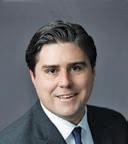
Loyola Medicine has announced the appointment of Michael J. Schmidt, MD, as chief medical officer at Loyola University Medical Center (LUMC).
Dr. Schmidt will oversee quality and safety, medical staff functions and peer review. Dr. Schmidt will hold a faculty appointment from Loyola University Chicago Stritch School of Medicine in the Department of Emergency Medicine. Previously, Dr. Schmidt was a practicing clinician and an associate professor of Emergency Medicine at Northwestern Medicine.
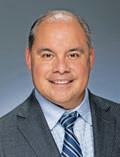
Laner Muchin is pleased to welcome Kyle Geiger as Of Counsel. Kyle has extensive experience litigating civil and commercial matters and is dedicated to helping clients mitigate risk and resolve disputes in the earliest stages of litigation. As an experienced trial lawyer, he has successfully represented corporations and individuals nationwide in matters involving business disputes, regulatory proceedings, construction defect and a wide range of insurance defense litigation.





GENERAL CONTRACTING
DSI, Oak Brook
DSI welcomes Michael Long as VP of Industrial Services. With 35+ years in Estimation, Preconstruction, and Construction, he has spearheaded significant projects totaling 35M SF, valued at over $200M. His expertise and dedication will significantly enhance DSI’s capabilities, driving strategic growth for our industrial practice and ensuring continued success for our clients.


INVESTMENT BANKING
Prairie Capital Advisors, Inc., Oakbrook Terrace
Prairie Capital Advisors, Inc., a leading corporate advisory and investment banking firm, is pleased to announce the promotions of Macie Dorow and Joseph Labetti to Vice President. Macie Dorow joined Prairie Capital Advisors in 2016 and specializes in advising middle market companies on mergers and acquisitions (“M&A”), capital formation and other investment banking transactions. Joseph Labetti joined Prairie Capital Advisors in 2022 and is part of the employee stock ownership plan (“ESOP”) advisory practice focusing on transaction structuring, capital raising and ESOP formations.


Meltzer, Purtill & Stelle LLC, Chicago / Schaumburg
Isaiah Fishman, a commercial litigator, recently started as a Partner at Meltzer, Purtill & Stelle. His experience includes resolving disputes in commercial real estate, employment, and bankruptcy issues. Bill Mitchell, Managing Partner, warmly welcomed Fishman’s arrival, commenting: “Isaiah brings a strong background in litigation and commercial real estate law and adds depth to our employment litigation and bankruptcy and restructuring groups.” Isaiah is based in the firm’s Schaumburg office.
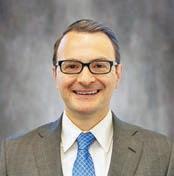

Benesch, Chicago
GENERAL CONTRACTING
DSI, Chicago
Prairie Capital Advisors, Inc., Chicago


DSI welcomes Eric Schmidt as the Director of Business Development for their Interiors Group. Eric brings a wealth of experience in executive project management, demonstrating exceptional focus, planning, and execution. His proven track record and diverse expertise will drive strategic growth for the interiors practice, ensuring continued success for our clients.
Prairie Capital Advisors, Inc., a leading corporate advisory and investment banking firm, is pleased to announce the promotion of Will Hobby to Vice President. Will advises middle-market companies on employee stock ownership plans (“ESOPs”), corporate valuation, financial opinions and other investment banking advisory services. He is responsible for providing project management services, corporate valuations and transaction analyses in support of capital structuring engagements.

Nicholas R. Pesavento has joined Benesch as Partner in the firm’s Corporate & Securities Practice Group. He has experience with structuring and negotiating merger, acquisition, buyout, and joint venture transactions for both strategic and investment fund clients, and regularly represents private equity funds in connection with acquisitions and dispositions.


Emily L. Morrison has joined Benesch as Partner in the firm’s Corporate & Securities Practice Group. Her practice includes a broad range of employee benefits and executive compensation matters, including handling such matters as part of corporate, M&A and private equity transactions.



























A lifeline for CPS and other districts is going away
How will schools continue their progress as COVID recovery funding winds down? | By
Judith CrownWith federal COVID recovery funds running out, Luz Maria Flores worries whether there will be adequate resources for the band, the debate team, tutoring and other extracurriculars at Back of the Yards College Prep High School.
“It will be a critical time for the school,” says Flores, chair of the Local School Council, who has a son heading into his senior year. “ ese activities motivate the students and keep them out of trouble.” Administrators, teachers and parents in the Chicago Public Schools system and districts throughout the region are grappling with the end of federal pandemic aid, a looming scal cli because of the steep decline in the one-time funding.
ere’s worry that the loss of funds will
stem the progress that’s been made since 2022. And additional funds are sorely needed to increase academic pro ciency at districts like CPS that have large numbers of low-income students and English language learners.
e loss is acute at CPS, which spent nearly two-thirds of its $2.8 billion in COVID dollars on salaries and employee bene ts. e district aims to preserve positions that enhance classroom learning, primarily in higher-needs schools, while cutting other costs such as central o ce sta , says Chief Education O cer Bogdana Chkoumbova.
e school district faces a $691 million operating budget de cit for its 2025 scal year, which will be mitigated by the availability of $300 million in remaining COVID
funds. Gov. J.B. Pritzker added a mandated $350 million annual increase for elementary and secondary education statewide in the Illnois budget, but that’s $200 million short of what advocates say is needed to ll gaps that put CPS and other underfunded districts at a disadvantage. CPS expects to receive about $23 million, the same as 2024, a spokeswoman says.
Meanwhile, the district last month agreed to a 4% raise for support sta represented by the Service Employees International Union Local 73. And the Chicago Teachers Union is asking for a 9% wage hike in negotiations that began in late April.
“ e de cit will get larger and CPS doesn’t have a plan to pay for it,” says Hal
See SCHOOLS on Page 14
SPONSORS“We
told our administrators and our building leadership, ‘Don’t fall in love with these roles if you’re not willing to swap something out, because we still owe it to our taxpayers to present a balanced budget.’ ”
Jeff Craig, District 129 superintendent
Fortune of geography, staff overhaul lifted tiny suburban district
The single-school Union District 81 achieved a remarkable turnaround
By Judith CrownIn Illinois’ unequal system of funding public education through property taxes, students from wealthy districts hold the upper hand.
But students in Union School District 81 — half of whom come from low-income families — are receiving a rich education partly because they live near an industrial park, whose taxes lift the district
to 200% of adequate funding, according to the Illinois State Board of Education.
Superintendent Tim Baldermann acknowledges that the single-school, K-8 Union District 81, which serves Joliet and part of New Lenox, is an anomaly. “We charge no registration, and every kid gets breakfast and lunch for free, regardless of their income level,” Baldermann says. Residents receive rebates on taxes
paid to the school district.
Even more remarkable is that the students outscore state proficiency levels: 67.2% proficiency in English/language arts compared with 34.6% for all of Illinois; 54.7% proficiency in math versus 26.9% for the state.
It wasn’t always so. The district achieved a turnaround with the arrival 12 years ago of Baldermann, a retired police chief and the mayor of New Lenox, who car-
ried no credentials in education.
“When I came, the school was performing in the bottom 10% of all schools in Illinois,” he says, “and was borrowing to pay its bills.” It took about five years to reach par with state averages, he says. Key to the reversal was an overhaul of staffing, Baldermann says. Some teachers who had been instructing outside of their subjects were returned to their area of expertise, and some tenured teachers were dismissed.“If you're not really here for children, and they don't think you care about them, it doesn't matter how good of a teacher you are,” he says. “It's not going to make a difference.”
During the pandemic, the district received $383,000 in federal relief funds, which it used, in part, for clear shields and air filters. Those safety measures paved the way for the school to reopen in August 2020. While the school was closed, Baldermann says, he delivered breakfast and lunch to students at their homes each day.
Chronic absenteeism became a worrying metric for schools
By Cassandra WestStudents may not get graded on their attendance, but when they miss too many school days, their grades are more likely to suffer. As schools continue to climb out of the COVID pandemic’s academic abyss, student absenteeism is a leading factor hindering their recovery from learning losses, researchers say.
Chronic absence, defined as missing more than one month out of each school year, can result in lingering academic struggles, according to Attendance Works, a national organization dedicated to reducing chronic absenteeism. Its research has shown that first graders who were chronically absent in kindergarten have lower reading, math and general knowledge scores relative to classmates with better attendance records.
Hedy Chang, founder and executive director of Attendance Works, began looking into chronic absenteeism in 2006. A report she authored, “Present, Engaged and Accounted For,” showed that prior to its release in 2008, chronic absenteeism wasn’t looked at as a data point. “(People) looked at truancy, which is unexcused absences,” Chang says. “It didn’t occur to them to look at kids missing too much school for any reason. We figured out that 10% was a really good ballpark for knowing when kids are academically at risk.”
Illinois law defines chronic absenteeism as missing 10% or more of school days per year, either with or without a valid excuse. Today, chronic absenteeism is among the multiple data points like homelessness, low income, English learners, and attendance that the state and school districts collect and report.
In 2022, chronic absenteeism in Chicago Public Schools jumped to 44.6%, almost doubling from the 2018 rate of 23%, state data show. Statewide, it was 16.8% in 2018, jumping to 29.8% in 2022. More than 125,000 CPS students last year met the definition of chronically absent.
As schools emerged from the pandemic and fully reopened, chronic absenteeism spiked in some of the largest school districts
CPS chronic absentee rate by race and ethnicity
While the student absentieeism rate at CPS spiked for all groups during the COVID-19 pandemic, the increase was especially acute for Black and Hispanic students.
CPS chronic absentee rate by student population
The student absenteeism rate at CPS for children with individualized education programs, children with disabilities and those from low-income families outpaced the overall student population.
tion of culture and climate in the schools,” Zakieh Mohammed, senior manager of attendance and truancy for CPS, says. “As a district, social-emotional learning has taken root. (We’re) looking at tiered systems of support, making sure that culture and climate is a key foundational element for kids so school is where they want to be.”
At Wendell Smith Elementary School serving the Pullman and Roseland neighborhoods on the Far South Side, that approach appears to be working. Chronic absenteeism has dropped significantly, from 54.4% in 2022 to 16.3% in 2023.
Principal Turan Crockett says his staff takes an “all-hands-ondeck strategy” to combating the problem. First is creating an environment that is welcoming and flexible, he says. “It doesn’t lie with just our attendance team. The attendance team is connected with our behavioral health team. We meet weekly (to) identify students that we can support. We really kind of wrap our minds around: How are we going to support kids?”
In addition to creating activities that inspire kids to attend school, such as handing out “scholar dollars,” Crockett says his staff is proactive in identifying students with chronic absenteeism. He or other staff members do check-ins that are intentional, then implement a plan to support students in coming to school. “Some kids just want someone to check in with them,” he says.
Source: Illinois Report Card
like those in New York, Florida and in Illinois. Meanwhile, CPS also saw a sharp increase in the number of students experiencing homelessness, a population of young people who historically have higher than average rates of absenteeism. The dramatic rise across all demographics, CPS notes, was exacerbated by challenges related to the pandemic, though the spike was notably higher among Black, Hispanic and lowincome students, as well as those with an individualized education
program or with disabilities.
Systemic barriers
CPS is a majority Black and Hispanic school district with a low-income rate above 75%. “In higher poverty communities, chronic absence tends to reflect systemic barriers that are ongoing, unstable housing, lack of access to transportation,” Chang says. Those are harder to change.”
In 2022, 54.1% of Black CPS students were chronically absent. For
Hispanic CPS students, the rate was 44.3% compared to 26% for white CPS students, 49.2% for low-income CPS students and 45.9% for CPS students with disabilities. The rates are starting to decline, as CPS takes a more holistic approach to outreach and reengagement in order to reconnect students to school, a district official shared with Crain’s.
“One of things the district is trying do is to reconnect, not only academically but building a founda-
The reasons students miss school vary widely, but education experts have observed much of the pandemic-era rise seems related to anxiety, stress and isolation. “All (of) that emerged in a different way,” Mohammed of CPS says. “All those things add to what being sick is today.”
As a result, attention to students’ mental health has been elevated. Not only are school districts more attuned, but so are lawmakers. In January 2022, Senate Bill 1577 amended K-12 school attendance policies allowing students to take up to five excused mental or behavioral health days “for which the child need not provide a medical note.”















SCHOOLS
Woods, chief of policy at the nonprofit Kids First Chicago.
While students at CPS and other districts lost ground as the pandemic set in, the federal COVID funds helped stem the decline and recover some of that ground. Statewide, the money went toward a range of uses such as upgrading heating and cooling systems and buying laptops and tablets for students. Additional social workers and counselors helped students deal with the emotional and social difficulties posed by the pandemic and the forced isolation. Teachers were added to help students recover and advance academically.
“No one was used to virtual learning,” says Flores, the Local School Council leader, who notes that her son would become distracted and that it was initially difficult to get an extra explanation on a difficult lesson.
CPS did make a strong recovery. It was ranked first in post-pandemic reading gains among the nation’s urban districts, according to the Education Recovery Scorecard project led by researchers at Harvard and Stanford universities. The project tracked the progress of students in third through eighth grade based on a national exam. CPS placed in the top third for math improvements.
But recovery from a setback is not the same as proficiency, and here, Chicago and the state of Illinois lag in language and math. For example, only 25.2% of CPS students are proficient in language, meaning they read at or above grade level, according to the Illinois State Board of Education. For all of Illinois, only 34.6% of students are proficient in reading.
“Our sights should be set on exceeding where we were before COVID-19, rather than just getting back to the pre-pandemic baseline,” says Jennifer Kirmes, director of policy at the nonprofit Advance Illinois, an education advocacy group.
Members of the CPS community, including parents and the Chicago Teachers Union as well as education advocates, have been on the same page on at least one issue: More money is needed from Springfield to compensate for the phasing out of federal support.
The pandemic relief funds helped fill the gap for underfunded schools, says Pavlyn Jankov, di-
A

rector of research at the CTU. “The state committed to fully funding schools, but we’re not on track to do that,” Jankov says, adding, “We’re not going to walk away from trying to hold the state to that commitment.”
Intensive tutoring and summer school
Chicago and other communities benefited in 2017 when the state of Illinois changed its funding formula to provide additional dollars to districts that are chronically underfunded and face the challenges of educating a large number of low-income students and English language learners. CPS, for example, is only at 75% of “adequate” funding, according to the State Board of Education. The formula, called evidence-based funding, was supposed to see all districts reach 90% of adequate funding by 2027, but that timeline is at risk.
The added funding from the new formula did have a protective effect and put CPS in a better position to endure the pandemic, Kirmes says. Between 2022 and 2023, CPS made up 35% of a grade equivalent in math for grades three through eight in a single year after
losing three-quarters of a grade equivalent during the pandemic, according to the Education Recovery Scorecard. Reading declined annually between 2019 and 2022, but a strong rebound between 2022 and 2023 brought reading above pre-pandemic levels.
That progress was helped, no doubt, by the investment in nearly 8,300 staff positions, including 2,348 teachers, an 11% increase. Schools across the city received more than 3,000 support staff such as youth intervention specialists, security guards and restorative justice coordinators. Another 2,099 professionals were hired citywide, including nurses and social workers. More than 600 central office staff positions were added.
The hiring of more teachers allowed for smaller class sizes where instruction could be more tailored, says CPS’ Chkoumbova. The students also benefited from intensive tutoring, receiving extra attention in 30-minute segments during classroom time, whether one-on-one or in small groups. CPS also hired 200 coaches to support teachers. Last year, 1 in 3 students attended a summer program, and 500 schools have offerings slated for June and July.
Chkoumbova says the district aims to maintain positions that provide direct support for students, primarily at schools where students have the biggest academic gaps to overcome. Funding is available for after-school programs, including athletics, clubs, enrichment and tutoring, with some provided by communitybased organizations, she adds.
“My wish is that the funds continue so that our students receive an excellent quality education because they are the future of our country,” says Flores. Overall, CPS has $300 million in remaining COVID funds that it will use next year. Many of the operational investments of the pandemic have been reduced or eliminated: Fewer nurses are needed, and the outlays for new devices such as laptops and tablets have been completed. Central office functions are being reduced, and some capital projects are being scaled back or postponed.
“We’ve made some difficult decisions around where to cut, but we decided not to cut classrooms and schools,” Chkoumbova says. But stability is dependent on securing additional revenue sources, she adds. “We’ve been advocat-
ing and asking for additional funding streams.”
‘Don’t fall in love with these roles’
Other districts in the Chicago area took different approaches to spending the federal COVID dollars, allocating less on salaries and benefits to avoid layoffs down the road.
That was the case in School District 129 in West Aurora, where the administration spent only 26% of COVID funds on salaries and dedicated 46% to capital outlays such as personal protective equipment and upgrading the heating and cooling systems. It received nearly $43 million in federal funds.
While much smaller than CPS, with 10,936 students compared to 319,769 in Chicago, it has a high percentage of low-income students and English language learners. Its funding is only at 69% of adequacy, according to the Illinois State Board of Education.
“We told our administrators and our building leadership, ‘Don't fall in love with these roles if you're not willing to swap something out, because we still owe it to our taxpayers to present a balanced
budget,’” says Superintendent Je Craig, who was preparing to retire at the end of the school year.
In adding sta , the district hired interventionists to support students and their families and sometimes visit homes. “When we hired these folks, we were upfront in telling them that the position would end when the grant money runs out,” Craig says. In some cases principals found a way to retain new hires that they found instrumental by making a cut elsewhere, such as not lling the position of a retiring teacher or sta member.
Reading for West Aurora students in grades three through eight returned to pre-pandemic levels in the 2022-23 school year, according to the Stanford-Harvard study. But math scores continued to decline. “We were trying to take care of our people rst — our students and sta ,” Craig says. “We’ll catch up academically.”
In Waukegan (13,584 students), administrators also spent proportionately less on salaries and used contract hires, says Gwendolyn Polk, associate superintendent for nance. Waukegan Community Unit School District 60, like CPS and West Aurora, has a high percentage of low-income students and English language learners. Its funding is only at 68% of adequacy. Federal COVID relief brought in nearly $78 million.
e district spent 38% of federal COVID dollars on capital projects and 24% on instruction. Technology was another focus, with dollars for computing devices, hot spots for students and technology enabling parents and teachers to communicate.
“We were very cautious in placing new individuals into the pool because we knew that that money was going away,” Polk says. Social workers and psychologists were di cult to hire, so the district hired these professionals through agencies. ey’ve been valuable in the district’s recovery and are being retained. To balance that expense, the district is postponing building improvements, Polk says. Pro ciency is lagging
Statewide, Illinois received $7.8 billion in federal school assistance, with districts spending 86% of the funds to date. In reading, Illinois was one of only three states (along with Louisiana and Mississippi) whose achievement for grades three to eight exceeds 2019 levels, according to the Harvard-Stanford study. e re-
searchers estimate that Illinois students made up roughly half of the original loss in math between 2022 and 2023.
Interpreting the data di erently, IWERC nds that Illinois elementary and middle school students are recovering in English language arts and math but on average haven’t reached pre-pandemic achievement levels. More discouraging is that average SAT scores among 11th graders in reading and math have declined consistently since the beginning of the pandemic.
“ e initial loss in high school was much less than the initial loss in elementary and middle school,” says Bates of IWERC. “But the unfortunate thing that we're now seeing is that while elementary and middle school alike are making a comeback, high school is continuing to decline. It may be that investments were made in the earlier grades where the decline was steeper.”
Chkoumbova says SAT scores at CPS were largely at. “While this is not a cause for celebration, our students did pretty well in maintaining their overall performance,” she says. Last year, the district “saw the highest graduation rates ever” and the highest number of students earning college credit, she adds.
IWERC tracks gains and drops in test scores to evaluate progress, but pro ciency is also a key metric.
CPS students gained 5 percentage points in language pro ciency to 25.2%, meaning that only a quarter of students read at or above grade level. at outpaced the overall gain by Illinois students in the same year, although CPS still lags state levels by nearly 10 points. Although lower in prociency rates compared to the state, Chicago shows competitive or better gains in certain demographics, such as Black students, according to an analysis by Kids First.
Chicago students gained only 2 percentage points in math, to 17.8%, meaning that fewer than one- fth of students perform at or above grade level. CPS outpaced the overall gain by students statewide but lags state levels by 9 percentage points. In general, CPS has lower pro ciency rates compared to statewide rates for the same demographic groups, Kids First notes. White students at CPS are an exception, outperforming their statewide peers.
Delay in reaching full funding
e introduction of evidencebased funding was supposed to
CPS students less pro cient than state peers
CPS spent more on salaries
Chicago
School Emergency Relief Funds on salaries than the average Illinois district.
A different spending focus
While Chicago Public Schools spent more than half of its Elementary and Secondary School Emergency Relief Funds on salaries and employee benefits, other Illinois districts with similar student populations spent a much smaller share on those things.
bring all schools to within 90% of adequate funding by 2027. But education advocates worry that goal won’t be reached because of rising expenses and other factors. At the current rate, the mandate won’t be fully funded until 2034, seven years past the statute’s requirement, according to Kids First. State leaders could increase the annual appropriation or modify the formula to boost allocations to districts with more low-income students, the nonpro t says.
Advance Illinois, CTU and other groups called on Pritzker to boost the increase in evidencebased funding, or EBF, to $550 million from $350 million, but the budget for scal year 2025
kept the status quo.
“Although data indicate that Illinois students are beginning to recover academically from the pandemic's disruptions, we are not yet to pre-pandemic academic prociency, recovery is uneven, disparities persist, (COVID) funds are nearly gone, and there is still a long way to go in supporting student well-being,” a statement from Advance Illinois says. “ e state must lean into EBF investments that go beyond the minimum funding level if it is to meet these challenges in earnest.”
Waukegan’s Polk agrees that the state must contribute the funds needed to close the gap for less wealthy districts. “ e evidence-
based model should be fully funded so that we don’t have to rely on the taxpayers who are struggling nancially,” she says.
Kids First has proposed a range of other funding options to help CPS, including an increase in the property tax levy or initiating a referendum to raise its taxing limits. Allowing tax-incrementnancing districts to expire would restore dedicated funds to the general tax base, establishing a larger pool for capital projects and pension payments.
“Without new state and local funding,” says Woods of Kids First, “CPS is at risk of losing the progress that it made in recovering from the pandemic.”
Let’s focus on what works for student success
As we close the books on the academic year, another chapter ends, too: COVID19 funding for education, also known as Elementary and Secondary School Emergency Relief (ESSER) funds, must be obligated by the end of September. These funds have provided critical support to districts and schools to try to make up for learning loss and the ripple effects of the pandemic. With ESSER funds ending, districts are grappling with budget challenges and what to prioritize. Let’s focus on what we know works, including the "Science of Reading," expanded opportunities for post-secondary education and more support for school staff.
First, literacy: the foundation of education. Pre-pandemic reading proficiency in the United States was already declining. The average performance of the country’s fourth and eighth graders declined in math and reading from 2017-2019, following a 10-year stagnation in progress. Notably, Black and Latino children, and those from low-income families, children with disabilities and students where English is their second language, have fallen even further behind.
The approach known as the "Science of Reading" shows promising results on increasing


Phil Alphonse is a senior partner and co-head of Knowledge & Learning Solutions at The Vistria Group. Janice Jackson, a former CEO of Chicago Public Schools, is CEO of Hope Chicago and an operating partner with The Vistria Group. Vistria is a sponsor of Crain’s Forum.
literacy. Mississippi saw drastic improvements in fourth-grade reading levels in just under a decade, which has been attributed in part to a requirement to train teachers in the Science of Reading. Long gone are the days of rote memorization. Instead, students need to be taught through science-based phonics instruction. Curriculum partners, like Really Great Reading, have been providing high-quality instructional materials that for decades have been tied to the Science of Reading. Studies have demonstrated that students who used these approaches had significantly larger growth in their reading
scores versus those who did not.
Second, students — especially Black and Latino students as well as those first in their family to pursue college — must have more support when it comes to postsecondary education. To break down systemic barriers, organizations like Hope Chicago equip high school students to make the transition into college easier with not only the financial support that covers tuition, room and board, plus the many ancillary fees associated with post-secondary education, but also the wraparound support to get students over the finish line.
Our collective job is to prepare students to succeed in today's job market, meaning skill development through career and technical education (CTE) is critical to ensuring today's students become tomorrow's talented workforce. The United States could be facing a shortage upward of 6 million skilled workers by 2030. Edmentum, an education technology platform, has launched newly developed CTE programming and the data shows the marked impact these programs can have on both career readiness and improving graduation rates. As workplaces evolve, CTE programs prepare students with tools related to automation and artificial intelligence,
We can help students get back to attending school regularly
How would you feel if your child was absent 10% or more of the school year? They'd miss critical lessons in reading and math, enriching art classes and social interactions that are key to their development. Inevitably, they would fall behind their peers academically and socially, making it harder to catch up and succeed.
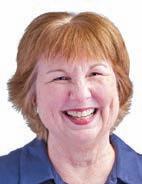 Jane Mentzinger is CEO of Communities In Schools of Chicago, a nonprofit that helps Chicago Public Schools students overcome obstacles to learning so that they can stay on the path to graduation and postsecondary success.
Jane Mentzinger is CEO of Communities In Schools of Chicago, a nonprofit that helps Chicago Public Schools students overcome obstacles to learning so that they can stay on the path to graduation and postsecondary success.
For many students in Chicago, this scenario is all too real. According to the latest data, 2 out of 5 Chicago Public Schools students were chronically absent during the 2022-23 academic year. That means they missed 18 or more school days. The district’s 40% chronic absence rate is 16 points higher than before the pandemic, and it represents more than 2 million missed school days. Like so many social challenges impacting our city, the phenomenon is unevenly
spread. Some elementary schools in well-off neighborhoods post chronic absence rates of less than 15%, even as other schools in high-need communities run above 50%.
In the simple calculus of academic achievement, seat time matters. One study found that primarygrade students who are chronically absent are much less likely to read at grade level by the third grade — a key academic milestone. Another study on public-school students was more sobering, finding that even one year of chronic absenteeism for students in grades 8-12 increased their dropout odds by a factor of seven. Chronic absenteeism is not a problem unique to Chicago. Other big city school districts struggle with attendance challenges, too. Many theories explain the surge in absenteeism. Habits may have been re-wired during remote learn-
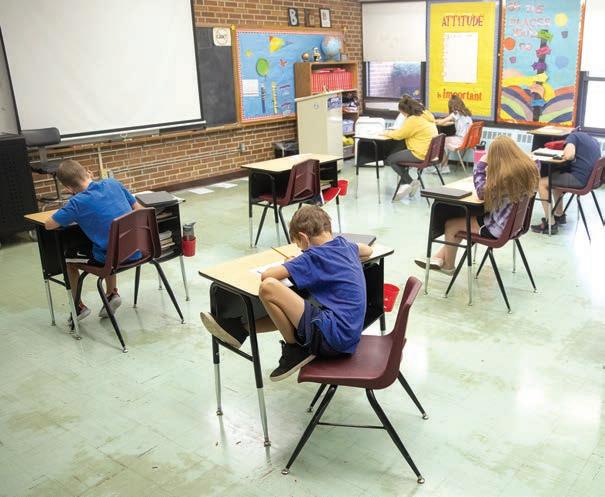
among other technical skills needed for our future workforce.
Finally, school staff need more support. The long-standing shortage of teachers prior to the pandemic has been exacerbated by the increased stress teachers have taken on while their average pay declines. In addition to onboarding a new generation of educators, we must equip existing teaching staff with the tools they need to be more effective in the classroom. Organizations like Ed Direction use a data-driven approach to give educators and school leaders the skills they need, while also helping students become more engaged.
Data has shown students can recover from the learning loss of the pandemic, but some of our students may never catch up.
Gains varied by state, but the most troubling finding was that higher-poverty districts that lost the most during the pandemic did not close the gap nationally. The window is closing with the current ESSER funding, but we must find ways to financially support school districts to continue to make achievement gains. We must be honest about how our students are performing and hold school districts accountable. Meeting the needs of our young people is not just an educational imperative, it’s critical for who we are as a workforce and a society. If we want to strengthen our country’s social fabric, decrease the racial wealth gap and improve life outcomes, it all starts with a solid educational foundation. Our future depends on it.
ing, causing students and families to take a more casual approach to coming to school each day. Many families struggle with access to reliable transportation, or they may need their children to miss school so they can work or provide child care. And a sharp rise in youth mental health challenges affects some students’ motivation to go to school.
Just like the causes of chronic absenteeism are multifaceted, so, too, are the strategies to improve attendance. CPS has directed more dollars to wraparound services, including mental health supports, restorative practices and after-school programming. These investments were not done specifically to raise attendance, but last year the district actually saw chronic absenteeism improve compared to 2021-22, a sign that holistic supports may help in many ways.
Another promising initiative the district has backed is intensive tutoring. The intent of offering more tutoring was to drive learning recovery efforts, but it may also be helping to improve attendance. It’s reasonable, after all, to think that students will feel more secure com-

ing to school if they’re performing well in math and reading.
One of the most important things schools can do to improve attendance is strengthen bonds between students and caring adults in the school building, including teachers, administrators and the staff of community partners like the organization I lead. About 40 of my colleagues at Communities In Schools work inside high-need schools across the city, providing one-on-one counseling and other intensive supports to young people who need extra help to succeed academically and socially. We help our students set goals
for improving their attendance and check in with them regularly to keep them accountable. We also stand by their side when they’re having challenges coming to school. Some have asserted that the rise in chronic absenteeism may be a new normal that educators will need to adjust to. I’m not one who subscribes to that theory. I believe in the agency of our students and the impact of dedicated educators, parents and partner organizations to make positive change. Together, we can help our students find their way back to regular school attendance. It starts with building strong, trusting relationships.
Right-size CPS to ensure a sustainable future
Chicago Public Schools stands at a critical juncture.
It faces a $391 million budget deficit, lingering academic and mental health challenges from the COVID pandemic, a chronic absenteeism rate of about 40%, and a system built for 450,000 students but serving only 323,000.
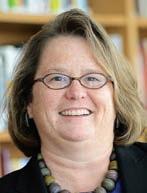
Meanwhile, Mayor Brandon Johnson and his appointed school board are moving the district in a drastically new direction mere months before CPS starts to transition to an elected board. Weighty policy decisions loom on school closings, charters, teacher and principal union contracts, and school budgets.
A Joyce Foundation-funded Public Agenda poll shows Chicagoans feel the uncertainty. They’re worried students are not learning enough academically. Nearly 85% think Chicago politicians and education leaders are too focused on petty politics instead of what’s best for students. And 74% have little confidence the budget is spent effectively.
Now is the time to do what Chicago does best: lift the children of this city onto big shoulders and chart a course together toward a brighter future.
Let’s build on the successes. New data by Stanford and Harvard
researchers shows Chicago elementary schools are improving faster academically than those in many big city districts coming out of the pandemic, especially in reading. The 2023 high school graduation rate of 85% is an all-time high. College enrollment has inched up to 62% and college graduation to 47%. This progress does not happen without dedicated educators who awake every morning with a desire to positively shape young lives.
But there are thousands of young people who attend schools that are not good enough — schools that do not have enough resources, high-quality teachers, rigorous course offerings or mental health services. Here are a few ideas to address challenges:
Plan for financial stability:
The CPS budget deficit is as predictable as the sunrise. The district has a $691 million structural deficit but will plug $300 million with one-time federal COVID-relief funds. Meanwhile, CPS enrollment plunged 12% in the last five years, according to state data. And the district has added more than 2,000 educators since 2019. This is not sustainable. It is imperative district leaders create a long-term financial sta-

bility plan that right-sizes the district while ensuring every student has high-quality school options.
Embrace the data: The district spent years gathering community input to develop a new school accountability plan. Adopted by the CPS board under former Mayor Lori Lightfoot, it will assess schools on things such as standardized exams, GPAs, attendance, school culture surveys and graduation rates. There’s been recent pushback on including standardized exams, but district leaders should stand strong on this. They also
should make school performance information accessible to parents and use it to drive more resources to students who need them the most. And they should build a strong plan to intervene in schools that repeatedly fail to serve students well.
Let research be a guide: There are several irrefutable facts in education: High-quality preschool sets students on a path to success; reading by the third grade is vital to good lifetime outcomes; teachers matter more to student achievement than any other aspect of schooling; and a post-secondary
credential is the surest path to economic mobility. CPS should ensure children in all neighborhoods have access to top-notch preschool programs. It should dedicate more resources to help teachers use evidence-based reading practices, such as phonics, mandated by a new state law. It should find ways to attract topnotch teachers to schools and subjects that need them the most, even if it means paying them more than their peers. And it should expand the Chicago Roadmap, a pathway for CPS students into City Colleges, to include four-year colleges and universities.
Let principals lead: Principals in CPS have more autonomy than those in other large urban districts. They can make major decisions around teacher hiring, budgets, curriculum and scheduling. Twothirds of Public Agenda respondents believe principals should be the primary decision-maker on issues that impact schools. Many credit the district’s success, in part, to principal autonomy. Let’s stick with what works.
Finally, we need to reinvigorate the Chicago spirit of collaboration. Many hands make light work. Policymakers, parents, educators and leaders in business, philanthropy, neighborhoods, unions, charter schools, and non-profits must unite and focus every decision and every dollar on what is best for our young people. They deserve nothing less.
What we lose when teachers leave the classroom
I’ve been in education for close to 20 years, and I know that a lot will change with student success if we focus on recruiting and retaining quality teachers. COVID recovery funds were not only necessary for us to have the resources we needed for learning loss recovery — they are critical in keeping the teaching profession alive.

more income.
So what does this have to do with Elementary and Secondary School Emergency Relief, or ESSER, funds, also known as COVID recovery funding?
According to the state of Illinois' ESSER dashboard, 42% of ESSER funds were spent on salaries and employee benefits, more than any other category.
This year, as a Teach Plus Illinois fellow, I was part of a working group on the recruitment and retention of teachers of color in Illinois. We took a deep dive into the future of the recovery of the teaching profession. What was clear is that we can’t make the changes needed for COVID recovery if we don’t take care of teachers.
COVID changed how other professions work, and now more people get to work remotely. I may have summers off, but I don’t have the flexibility to work remotely, and I am not paid the same as my peers in other professions. Over the years, my summers have been spent recovering from the school year and taking on other jobs for
How will districts in our state supplement these funds? For larger urban districts, this may not be as difficult as it is for averaged-sized or smaller suburban and rural districts. Many of these districts already have high student needs and struggle to recruit staff. Losing ESSER funds that go toward salaries and stipends for extra work will not help.
When we’re not investing in teachers, we're not investing in students and the prosperity of our nation. Investing in teachers will address other critical issues:
Teacher retention: Many of my peers have turned to me and said, “Why stay in this profession if corporate pays me more and

gives me more flexibility?” A good number of my peers were strong teachers who left because of burnout.
Teacher recruitment: Colleges are struggling to maintain education programs because they cannot recruit students for those programs. Other professions pay their interns — teaching does not. Teachers actually have to pay to be an intern. Why should we
student-teach if we’re not being paid? Paying for student teachers like interns may create a more robust field for teachers. The Illinois House of Representatives passed a bill in May that would provide student teachers $10,000 stipends per semester for up to two consecutive semesters, but the bill did not make it to the Senate floor for a vote before the end of the spring legislative session.
Low test scores in reading, writing, math and science: As a country, we are not in a position to compete with the rest of the world in education. Countries like Finland, which have high test scores, also have created conditions that retain strong teachers in the profession.
Funding the “Invisible Tax”: We need to create a field of teachers that reflects the diversity of the student population. Many teachers across the country who come from marginalized communities report having to take on extra duties and responsibilities because of who they are and what they look like. This can take the form of having to oversee the discipline of students whom they don’t teach to being asked to prepare professional development materials related to their own communities. They’re left to struggle with the taxing burden of having to educate their districts about their cultural identities.
With ESSER funds drying up, how long will Illinois be able to sustain teacher recruitment and retention funding? Illinois needs to sustain its teaching corps. It is crucial not just to students and teachers. It is crucial to the entire state.
Teachers’ attendance records matter, too
If you’ve read a newspaper in the past year, you know there is a crisis of chronic student absenteeism since the onset of the pandemic. The headlines have been inescapable.
But you might not be aware that students aren’t the only ones missing more days of school. Teachers are, too.
In 2022-23, about 36% of public school teachers in Illinois were absent at least 10 times. That’s up from just 26% in 2018-19. For Chicago Public Schools, the numbers are even more alarming. Fortythree percent of teachers missed at least 10 days.

Tim Daly is CEO of EdNavigator, a national nonprofit that helps parents and caregivers support their children’s success in school, and author of the Substack newsletter The Education Daly.
What’s so magical about 10 days? According to the Illinois State Board of Education, “the National Bureau of Economic Research has shown that when teachers are absent for 10 days or more, student outcomes decrease significantly.”
When teachers are absent, students learn less. Schools rely on substitutes with less experience
and weaker instructional skills. They execute lesson plans they did not write for children they may barely know. The consequences of a teacher being out of the classroom are felt by dozens of kids — at a minimum.
Why are teachers missing more days even as COVID wanes?
The most obvious reason is burnout. Our teachers have endured Zoom school, re-opening debates, hybrid schedules, mask enforcement, student learning loss, mobile phone battles and behavior challenges, among other hassles.
Now, on top of all that, some teachers are being pulled into substitute duty during their planning periods to cover for absent colleagues. And don’t forget that teachers have enjoyed little of the postpandemic flexibility that’s now common in other white-collar professions. Nobody is allowing them to work from home on Mondays and Fridays or offering a

complimentary smoothie bar in a swanky employee cafeteria. When teachers get exhausted and need to catch their breath, taking a sick day is one of their only remedies. It’s time to take this problem seriously. Illinois has an opportunity to be a national leader. For years, it has collected and published detailed data on teacher attendance — one of the few states to do so. We know that lower rates of absenteeism are possible because we have
achieved them in the past. Here are three key solutions:
1. Uncover the root causes of teacher absenteeism. We must go beyond broad explanations like burnout. Districts should be surveying teachers on a confidential, nonthreatening basis to determine why they are missing more days. Are they staying home to care for sick children of their own? Do they find that they can only get appointments for health or dental care during the
school day? Are they getting sick more often? Let’s stop guessing and start asking, and report the results.
2. Get policies and incentives right. In some districts, teachers must use their annual sick days or lose them. Perhaps that’s not the wisest approach. It could be more sensible to offer a moderate financial incentive for each unused sick day in a teacher’s bank at the end of the year or a bonus for each week of perfect attendance.
3. Set public goals. How many days should a teacher miss each year? It’s not zero. Illnesses and emergencies happen. But the current surge in absenteeism is significant enough to harm students. Education leaders — from the state superintendent to district board chairs and local superintendents — should go on record with robust, attainable targets for teacher attendance next school year. They should report on progress multiple times along the way, and prepare to be held accountable by the public for hitting the mark.
Our absent students won’t come back to class until their teachers are present, too. Let this be the school year we finally give this issue the focus it deserves.
Parents have sharp views on school spending priorities
Massive changes are looming over local schools. The question for area leadership is whether this will be a perfect storm, leaving chaos and destruction in its wake, or an inflection point leading to a stronger, more equitable educational system.
Either way, two massive events impend. Federal COVID-relief funding, which accounted for 7% of the money spent on Chicago schools last year, is starting to dry up. One former school administrator told Chalkbeat Chicago that the windfall felt like “winning the lottery.” All good things must end, however, and while the extra cash won’t run out entirely until the 2025-26 school year, the cushion it afforded schools is fast disappearing and the city’s public school system faces a $391 million deficit this coming school year — a figure that is expected to reach $700 million the following year.
At the same time, the school system is implementing a new funding formula for schools that will give each institution a baseline resource level with additional money allocated according to assessed need — a sharp change from the enrollment-based funding formula the system had employed. It’s going to mean that some selective enrollment and magnet schools are going to lose money, which is prompting complaints and concerns, with five elementary schools and four high schools voting to symbolically reject their budgets.
Nevertheless, the new formula

William Johnson is CEO of The Harris Poll, a global public opinion polling, market research and strategy firm.

ought to engender support from the 47% of Cook County parents of school-age children who don’t think their school receives sufficient support, as well as the 37% who believe that public school resources (both in terms of money and non-financial support) are not evenly distributed, according to a recent Harris Poll survey. Notably, those sentiments are even stronger among parents who live within the city: A majority (56%) of those who live within the city of Chicago itself don’t believe that their local school receives sufficient support, while nearly half (47%) said that school resources are inequitably distributed. What do parents want the public school system to prioritize? For many Chicago-area families with school-age children, the answer extends beyond the traditional school concerns of classroom education. More than 3 in 5 (62%) of these parents said that funding extracurricular activities is at least as important as funding traditional core classes. Roughly half (49%) said they would like to see local schools offer non-academic programs such as life-skills classes and
technical training. And nearly as many said students benefit when schools have non-learning resources such as lunch programs and guidance counselors available.
Even focusing directly on what goes on in the classroom, parents favor a modern approach, with 60% saying innovations such as a flexible curriculum and further integrating technology into the student experience would benefit the children. (Nevertheless, a smaller portion of parents — only 38% — said the benefits of technologies such as augmented and virtual reality outweigh their drawbacks.)
Meeting these wishes would be a tough needle to thread under ideal circumstances. The slow-motion budget crunch and changes to the school funding formula, however, make the situation that much harder, but still not impossible.
The key will be local leaders’ ability to coalesce around practical solutions for improving the school system without unduly harming schools that may already be individually successful. If executed adeptly, there may be a case where a rising tide can lift all boats: A strong educational base would mean more jobs and economic opportunity and a more vital and prosperous city.
After all, crises are also opportunities, to borrow a concept a recent former mayor liked to tout. City leaders should take advantage of this one to set Chicago Public Schools on a firmer, fairer and ultimately more successful course.
Not enough resources
Non-learning priorities
CRAIN’S DINING AND ENTERTAINMENT GUIDE
AIRE ROOFTOP BAR
100 W. Monroe St., 24th Floor, Chicago, IL 60603 773-598-8324 • airechicago.com
Embark on a refined experience as Aire Rooftop Bar reopens its doors on May 19th. Discover an array of new cocktails and menus tailored for discerning palates, ideal for sophisticated business luncheons. Delight in our enhanced happy hour offerings and weekly highlights, accompanied by live musical performances. From lunch to dinner, join us in elevating your evenings amidst breathtaking views starting May 19th.

DOLCI AMORI
West Loop: 494 N. Milwaukee, Chicago, IL 60654 Lakeview: 3025 N. Clark St., Chicago, IL 60657 Gold Coast: 2 W. Elm St., Chicago, IL 60610 312-414-0955 • dolciamori.com
Dolci Amori, Chicago’s authentic Italian pastry shop founded by Napoli native Ciro Longobardo, blends traditional “Italian Pasticciera” and “Rosticciera.” Our top priority is always freshness and quality. Explore unique contemporary Italian pastries, pizzas and paninis crafted by our renowned team from Italy, led by a 40-year experienced Pastry Chef.

MORETTI’S RESTAURANTS
Visit our website for our locations across Chicagoland morettisrestaurants.com
Moretti’s was founded in Chicago and is 100% family-owned and exclusive to the Chicago area. The original Moretti’s is on the northwest side of Chicago. Ten other locations serve the north and west metro area. Moretti’s original family recipes range from traditional to the latest delicious trends. All ingredients are fresh, and everything is handcrafted to order.

News | Analysis | Events



Dogs will soon fly first class from Chicago
Bark Air is designed specifically for canines — or at least those with owners who are willing to pay $6,000 for a flightBy Jack Grieve
A new airline offering priority status to dogs will soon start service in Chicago.
Bark Air sells itself as the first air travel experience designed specifically for dogs first and their human counterparts second. After launching in May with flights connecting New York to Los Angeles and London, the company on June 12 announced plans to expand to five new airports in October, including Chicago Midway International Airport.
The other new Bark Air destinations are San Jose Mineta International Airport, Phoenix Sky Harbor International Airport, Fort Lauderdale Executive Airport and Paris–Le Bourget Airport. Bark currently operates out of Westchester County Airport in New York, Van Nuys Airport in Los Angeles and London Biggin Hill Airport in the U.K. Chicago flights will fly to and
from Miami, New York, Phoenix and San Jose.
‘White glove experience’
A Bark flight “takes the white glove experience typical of a human’s first-class experience and redirects all that pampering to pooches — from booking to arrival, to in-flight services and disembarkation, dogs are the VIPs and treated to a positively luxurious, curated experience,” the company said in a statement announcing the expansion.
That first-class treatment comes with promises to furry flyers of calming treats, scented towels, music and an array of beverages — think chicken bone broth, for example — on board the Gulfstream G5 aircrafts. Dogs will be able to roam freely on the plane. Getting on board is not cheap, though. Airfare for a single ticket, which includes travel for one dog and one human passenger, costs a staggering $6,000. The company acknowledges the priciness of

the service — “Money is a construct developed by humans as a means of alienating the worker from the fruits of their labor,” the Bark website reads — but says it hopes to bring costs down as the company scales.
The planes are branded with a “Bark Air” logo similar to the one used on the company’s BarkBox toy and treat subscription deliveries. Bark worked with advertising agency Tombras on the proj-
ect, which has been years in the making.
“An Argus Platinum-rated charter company is responsible for all aircraft, crew, maintenance and insurance-related matters, while Bark is focused on creating and delivering a worldclass air travel experience for dogs and their people,” Bark said.
“It is not a gag. It’s very much real. And it’s something we’ve
been wanting to do for over a decade,” said Dave Stangle, Bark’s vice president of brand marketing. “There’s huge demand for this. And the obvious truth is that the airline industry doesn’t want to make the flying experience better for dogs. We’ve tried to partner with airlines for years. Now we’ve decided to build it ourselves.”
Ad Age reporter Tim Nudd contributed.
CRAIN’S PARTNER
Big Shoulders lands record $150M donation
It’s being described as the largest-ever single investment in pre-K-to-12 Catholic education and will be disbursed over 10 yearsBy Brandon Dupré
Big Shoulders Fund, a nonprofit serving Catholic schools in Chicago and Indiana, landed a record $150 million donation from the Dean and Barbara White Family Foundation.
The funds, to be disbursed over 10 years, will support northwest Indiana Catholic school students and communities of need in the Diocese of Gary. The donation is the largest-ever single investment in pre-K-to-12 Catholic education, according to the nonprofit.
“We know that access to high-quality, values-based education is as important as anything we can support, and our efforts would not be complete without a deep commitment to the Catholic schools that have been a critical part of the fabric of Northwest Indiana for decades,” Bill Hanna, executive director of the White Family Foundation, said in a statement.
The Big Shoulders Fund, which is backed by some of Chicago’s wealthiest businesspeople, said
the donation will support datadriven initiatives aimed at boosting college and career outcomes for Catholic schools in northwest Indiana.
The initiatives, according to the nonprofit, will include “curriculum development, teacher training, leadership development, infrastructure improvements, and student support services, as well as new governance models, management structures, and assistance with enrollment and tuition management.”
The record donation also caught the attention of Indiana Gov. Eric Holcomb, who praised it for its potentially transformative power.
“Receiving a great education is the surest long-term way to lift up society one student at a time. . . .This remarkable donation from the Dean and Barbara White Family Foundation will help change the course for communities through the dedication and hard work of Big Shoulders Fund with the Catholic Diocese of Gary and, more broadly, throughout the Region,” Holcomb said in a statement.

Big Shoulders Fund, which was founded with the help of the late Chicago Cardinal Joseph Bernardin, has been supporting local schools since 1986 with scholarships, operational help, professional development and capital for renovations and books.
The nonprofit supports 72 schools in the Chicago region
and 19 schools in northwest Indiana, according to its website, and invests more than $40 million annually in those Catholic schools and various support programs.
In 2020, it struck a landmark agreement with the Archdiocese of Chicago by taking a 51% financial stake in 30 Catholic schools,
located mainly on the city’s South and West sides. The fund operates independently of the church.
The White family’s wealth was initially built through outdoor advertising and eventually encompassed hotels, amusement parks and residential real estate development.
Cameo moving HQ back to Fulton Market
The celebrity video-shoutout startup is doubling its office footprint and returning to the former meatpacking district
By Rachel HerzogChicago startup Cameo is recommitting to the office, signing a lease for a new Fulton Market headquarters.
The company, which runs an online marketplace for video shoutouts from celebrities, will move into a two-floor, 18,000-squarefoot space at 320 N. Elizabeth St. at the end of July, founder and CEO Steven Galanis confirmed.
The move from about half that amount of space in River North comes on the heels of Cameo’s latest funding round. While Cameo saw its valuation fall to less than $100 million — down from $1 billion in 2021 — and endured staff cutbacks that took its headcount from about 375 to less than 40, the company got to profitability in 2023 and raised more than $25 million in new capital in March.
Cameo plans to hire a handful of new employees in the next year, Galanis said. While he isn’t mandating workers to return to the office, he believes in-person work is good for the company’s culture.
Cameo plans to use the first floor for events and the second as its working office.

“We just saw people being more productive in the office, especially in our sales and go-to-market functions, and those are the functions that we’re primarily growing here,” Galanis said.
Cameo’s move to Fulton Market will be a return to the former meatpacking district that’s become the place to be for startups and tech companies seeking office space in Chicago. Before the onset
of the COVID-19 pandemic, Cameo occupied about 40,000 square feet at 400 N. Aberdeen St.
The company was about to sign a lease for another Fulton Market office in March 2020 but opted to go
fully remote instead, then moved into a 9,000-square-foot space at 620 N. LaSalle Drive in 2022.
“Cameo is a darling startup in Chicago and a key component to the thriving tech ecosystem,” CBRE Senior Vice President Tony Coglianese, who represented the company in the negotiations, said in a written statement. “This new HQ is a great signal to founders and operators that community and office work matters, and I’m excited to see the impact this new HQ brings back to market.”
Cameo has a six-year lease at 320 N. Elizabeth St., according to sources familiar with the deal. Adam Pines, senior vice president at Chicago-based commercial real estate firm Madison Rose, oversees leasing at the 43,322-square-foot building, which is owned by New York real estate investor Alvarez & Marsal Property Investments.
“We are proud to welcome Cameo as 320 N. Elizabeth’s new anchor tenant. Their headquarters is an incredible addition to the neighborhood and a great win for ownership,” Pines said in a statement.
Skokie-based Next Realty, which owns the LaSalle Drive building Cameo is leaving, didn’t return a request for comment.

Advertising Section
CLASSIFIEDS
To place your listing, contact Suzanne Janik at (313) 446-0455 or email sjanik@crain.com .www.chicagobusiness.com/classi eds
CAREER OPPORTUNITIES
hasanopeninginChicago,ILfor Dev&codeSWprgrms.MSorBS+2 yrsexpreqd.Telecommaybeprmtd.Whennottelecom,mstrprttowrkste.Toapplyemailresumeto Jobs@Zebra.com&refjob#7568312.Ifyouareanindvdalw/adisbility&needasstnceinaplyngfor psiton,contctusatworkplace.accommodations@zebra.com.TheEEOistheLaw.Thepostersareavalble here:https://www.eeoc.gov/sites/default/files/2023-06/22-088_EEOC_KnowYourRights6.12.pdf; https://www.dol.gov/sites/dolgov/files/ofccp/regs/compliance/posters/pdf/OFCCP_ EEO_Supplement_Final_JRF_QA_508c.pdf
CAREER OPPORTUNITIES
hasanopeninginLincolnshire,ILfor Estreqs&archtctreforSWdsgnprjcts. BS+5yrsexpreqd.Telecompermit.ToapplyemailresumetoJobs@Zebra.com&refjob#7565904.Ifyou areanindvdalw/adisbility&needasstnceinaplyngforpsiton,contctusat workplace.accommodations@zebra.com.TheEEOistheLaw.Thepostersareavalblehere: https://www.eeoc.gov/sites/default/files/2023-06/22-088_EEOC_KnowYourRights6.12.pdf; https://www.dol.gov/sites/dolgov/files/ofccp/regs/compliance/posters/pdf/OFCCP_ EEO_Supplement_Final_JRF_QA_508c.pdf
seeksa inBurrRidge,ILtoDesign andbuildhigh-performance,scalable,and reliablecomponent-basedapplicationsusing thelatesttechnologies.Applyat jobpostingtoday.comRef#44555
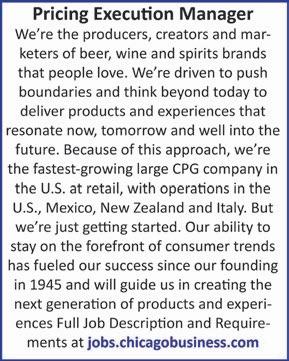

Aone-timeprojectforaconsultantto implementandtrainforbusinessandpersonal computeruse.DowntownChicagomeeting location.Emailrbakeresq@gmail.com

Petition aims to block demolition of buildings next to Wrigley Field
The development group that owns the three properties and plans to turn them into apartments was caught by surprise by the neighbors’ effort
By Dennis RodkinAn online petition is calling for city officials to prevent demolition of a trio of historical residential buildings next to Wrigley Field whose owners hope to replace with an apartment building.
Earlier this year, the investors who own the buildings at 3627, 3631 and 3633 N. Sheffield Ave. rolled out plans for a new 29-unit rental building. The plan is up for review at a June 25 meeting of the the City Council’s Committee on Zoning, Landmarks & Building Standards.
But a petition on Change.org calls on city officials to “reconsider this development” and “preserve these historic Wrigleyville buildings.”
Since its launch on June 10, 515 people have signed the petition, which was posted by Lisa Sorenson. The proposed five-story building, it says, “would tower two stories higher” than the trio. It would be “more visible from Wrigley Field’s view shed and negatively affect the rear N. Wilton (Avenue) neighbor’s quality of life.”
“The historical buildings on that block of North Sheffield are just too significant to replace with a generic new building,” said Sorenson, who is in biotech sales and has owned a condominium on Wilton Avenue about a block north and a block east of the Sheffield buildings for about 18 years.
The historical trio, she said, “can be seen from a lot of the seats inside Wrigley,” and contribute to the charm that fans both in the park and watching on TV absorb. The proposed replacement, she said, would dissipate that character.
Several people who’ve signed the petition have referred to the buildings’ “charm” and contribution to the historical fabric of the neighborhood around Wrigley Field. Crain’s called several of them for further comment, but none responded.
Marc Anguiano, a leader of the development group that owns the three existing buildings, said the petition was a surprise because “we’ve worked on this with the alderman’s office and the community for eight months, and we’ve tried to find something that fits the character of the block.”
Sorenson counters that she and several people she has spoken with received little, if any, notice of two public meetings on the proposal. She launched the petition, she said, specifically because 44th Ward Ald. Bennett Lawson’s staff was unresponsive to her requests for more community meetings on the proposal.
Anguiano said the look of the facade, with three arched entries at street level, “is something we did to reflect what’s been there.”
Two of the historical buildings have arches in their facades, as do others on the street, both his-

torical and modern.
If the buildings are preserved from demolition, Sorenson said, she hopes to pursue landmarking for the blocks of Sheffield Avenue and Addison Street that abut the ballpark. “What we’re trying to do is protect this little part of Wrigleyville that hasn’t changed,” she said. “A lot of what the Ricketts have done in the neighborhood is for the better, but it doesn’t have to change everywhere.”
“We’re trying to stay true to the fabric of the neighborhood,” Anguiano said. Plans call for building with brick and stone, “not like all the new metal and glass buildings that have been built” along Addison and Clark streets on the blocks near the ballpark.
With at least a nod toward the historical buildings, the apartment proposal is a notch above DePaul University’s plan to demolish a corner group of five vintage buildings to put up a basketball practice facility. That site, also on Sheffield Avenue, is about 1.8 miles south of the trio the petitioners hope to save.
Lawson did not respond to a request for comment. In March, he told Crain’s members of the East Lakeview Neighbors community group generally hadn’t expressed disfavor of the proposal.
Many neighbors, including the Chicago Cubs, were okay with a project that was all-residential and didn’t bring any new commercial uses to the block that has Murphy’s Bleachers at one end, at Waveland Avenue, and Sports Corner at the other, at Addison Street, Crain’s reported.
Memorable past
The three buildings have a memorable past as rooftop roosts for watching Cubs games across the street in the years before the Ricketts family, which owns the team, began cracking down. The brick building at 3633 N. Sheffield was the Lakeview Baseball Club and sported a sign near the roofline that read “Eamus Catuli,” a Latin translation of “Let’s go, Cubs!” The grey-
stone next door at 3631 N. Sheffield had a Torco sign on its roof. Since 2015, when the Cubs built a giant video scoreboard on the Sheffield side of the ballpark, there’s been no view into Wrigley Field from the trio of buildings. Sorenson said preventing the demolition of these buildings would also send a signal to the Ricketts family, who over the years have bought up about a dozen of the old rooftop-viewing buildings. They have not announced plans to demolish any of the structures, but Sorenson said if city officials approve the trio of demolitions on Sheffield, “the Ricketts could go next.” Anguiano’s group has owned the buildings at each end of the trio since about 2012, and in May 2023 acquired the one in between, at 3631 N. Sheffield, for about $3.43 million, according to the Cook County Clerk’s Office.
Adding the in-between building “is what makes this project possible,” Anguiano said of the proposed apartment building. The group previously looked at developing the two bookend sites separately. Because of its conversion into a hospitality venue, the 3633 Sheffield building couldn’t easily go back to residential, he said.
“Nothing penciled out,” Anguiano said. The 3633 Sheffield building has been vacant for several years, and “the cost to revamp it is pretty costly,” he said.
When the investors added the middle building last year, they first explored building three new structures, one per lot, but found a single building was better for providing “the shared amenities tenants want,” Anguiano said, as well as ADA accessibility.
In the petition, Sorenson notes the trio are all older than Wrigley Field. She gives the build year as 1901, a year Crain’s couldn’t confirm. The Cook County assessor’s records show the middle building being built around 1899, but it doesn’t have dates for its two neighbors. Wrigley Field was built in 1914.







documents in a “complete and timely manner.” He also revealed the opening of an unrelated investigation into an unidentified regional director over allegations of embezzlement.
While the veracity of the claims have not been determined, they echo the kind of wrongdoing uncovered by a yearslong corruption probe that landed two past presidents in jail and led to the first-ever direct election, which Fain won. The alleged lack of cooperation also mirrors complaints Barofsky made against Fain’s predecessor, Ray Curry.
Marick Masters, a labor expert at Wayne State University in Detroit, emphasized that it’s premature to draw many conclusions about the investigation but said even the perception of scandal could be a drag on the UAW’s agenda.
“The real cost to the union is that it will drain their time and energy,” he told Crain’s sister brand Automotive News. “It makes it more difficult to focus on the issues.”
Opposition ammunition
One issue at stake is Fain’s ongoing push to organize nonunion automakers.
While he had success at a Tennessee Volkswagen plant in April, the UAW suffered a defeat at an Alabama Mercedes-Benz plant last month. The union hasn’t made visible progress at other plants since.
“It wants to maintain as pristine an image as possible, and this is a blemish its opposition will spin to great advantage,” Masters said. “The union has to steady the ship, so to speak, so workers don’t have those [corruption] concerns and they can focus on what the real benefits of the union would be.”

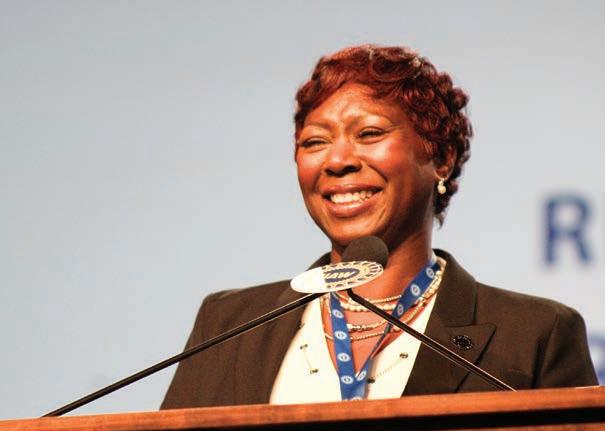
Even before the monitor’s latest report, anti-unionists in Chattanooga attempted to paint the UAW as untrustworthy by reminding workers of its history of corruption through signs, billboards and online messaging.
The nonprofit Center for Union Facts began highlighting the monitor’s investigation of Fain as soon as the news emerged.
Expect more of that, experts say.
“It’s all ammunition,” Art Wheaton, a labor relations expert at Cornell University, told Automotive News. “Every story that’s written that puts them in a bad light, the management and anti-union firms will absolutely use that against them.”
Report allegations
At issue, according to the monitor’s 36-page report, is Fain’s February decision to reassign oversight of multiple departments from Mock, with approval from the union’s International Executive Board. According to the report, Mock said the move was retaliation for her refusal or re-
his project and others like it.
Strategic Advisors, a consulting firm based in Oak Brook.
“A data center is a real estate deal,” Villegas says. “This is an opportunity for minority and women to participate in the space.”
Craig Huffman, who hopes to break ground next year on a 50megawatt data center on the Illinois Medical District campus on the Near West Side, says the ordinance would provide a boost to
“One of the things people don’t realize is more than $400 million of the city of Chicago’s budget is IT spend, which supports companies that use data centers that are in Chicago, but many do not,” says Huffman, CEO of Metro Edge Development Partners. “There should be incentives for more investment to happen.”
Villegas also proposes another 6% of the annual data spend go to vendors using data centers within Illinois. He introduced the ordinance a couple of months ago
luctance to authorize certain expenditures for Fain’s office. The monitor also is investigating Mock’s actions.
Barofsky also is looking into Fain’s decision in late May to remove Boyer from heading the Stellantis department, purportedly because of what Fain called Boyer’s “dereliction of duty” on collective bargaining issues, according to the report.
“Over the past several months, since we settled our 2023 contract, we have heard our Stellantis members loud and clear: this company is running roughshod over our agreement and over our members,” Fain said in a May 31 letter to members explaining his decision. “It is not a personal decision. Vice President Boyer and I are friends. In the old UAW, that would have meant he and I decide to not rock the boat, and if that means the members fall a little bit further behind, so be it. In the new UAW, it means we step in and take corrective action when needed.”
But Boyer alleges he was reassigned for refusing to “engage in
and plans to bring it up for a committee vote next month. It has drawn mixed reviews from the private sector.
“We appreciate Ald. Villegas’ leadership in recognizing the many benefits data centers provide local communities, including significant tax revenue, catalyzing supply chain and service ecosystems, creating jobs for thousands of construction workers as facilities are built and providing quality, high-wage jobs to support ongoing operations,” Josh Levi, president of the Data Center Coalition, a national
acts of financial misconduct to benefit others,” the report said, without further describing those acts.
After Barofsky’s report was published, Fain issued a statement saying he encouraged the monitor “to investigate whatever claims are brought to their office, because we know what they’ll find: a UAW leadership committed to serving the membership, and running a democratic union.”
He added: “Taking our union in a new direction means sometimes you have to rock the boat, and that upsets some people who want to keep the status quo.”
Still, Barofsky accused UAW officials of stonewalling his investigation. The report said his office had received only about 2,600 out of as many as 116,000 documents requested.
Out in the open
Wheaton said the decision to change UAW board members’ assignments is within the president’s purview, according to the union’s constitution, noting that
trade group whose members include tech giants Google, Meta and Microsoft, said in a statement.
Potential downsides
The Chicagoland Chamber of Commerce says the ordinance has potential downsides.
“While we appreciate Ald. Villegas recognizing the many benefits of data centers, we are concerned that his ordinance will give data centers a reason to cross Chicago off their lists for site selection,” the chamber says in a statement. “This ordinance
it has happened abruptly in the past before contract negotiations.
“On the face of it, reassigning some duties doesn’t sound at all that unusual,” he said. “That’s the choice of the president, historically.”
Masters said it’s important for the UAW to be proactive and demonstrate that it’s complying with the investigation. The longer the issue drags on, he said, the higher the chance it could sour members’ perception of their leaders, even if some of the infighting described in the report is common.
“I really think this is a function of the normal internal frictions that arise within a union,” he said. “Before, these normal battles among the leaders probably just would have been fought out, perhaps in a vicious way, but among themselves. It’s a different era now, and things are out in the open, and the union has to be mindful of that.”
Michael Martinez writes for Crain’s sister brand Automotive News.
would be the first attempt in the country to legislatively mandate data-residency requirements and would likely result in unintended consequences.”
“Further, the ordinance views data processing in an antiquated way and does not reflect the way data actually operates. We believe there are better ways to encourage data-center growth across Chicago and stand ready to continue working with Ald. Villegas and other members of City Council to ensure Chicago remains a leader in the data center space.”
every two years, the average acquired company cost $16.5 million, had revenue of $6.4 million and 35 employees.
During her first search, Majid reached out to 10,000 businesses, which resulted in about 150 to 200 conversations with company owners before she landed on Acorn.
Majid started her latest search at the end of April. She already is contacting 500 companies a week via email after identifying potential candidates culled from a business database. Her email campaign is broken up into three phases. The first is an introduction, the second talks about her background as a CEO and third is about her experience selling Acorn to demonstrate how she has been in the owner’s shoes.
She also has a website where
owners can reach out to her directly.
“Different owners will respond to different stories,” she said.
“The parts that might differ are what it is about their industry that attracts me, what it is about their business that caught my attention, who we might know in common. I might highlight different parts of my background depending on the industry.”
Fertile ground
Illinois is fertile ground. Ac-
cording to the Stanford study, so-called searchers bought 16 companies in the state during 2020 and 2021. That tied for second most of any state with New York, well behind California’s 47.
Majid prefers searching on her own and will take out a loan to supplement the proceeds she got from the Acorn sale, to fund the purchase.
“Instead of needing to convince 15 people to invest in me, I
just needed to convince one guy to believe in me,” she said.
Working by herself gives her an advantage with targets wary of selling to private-equity firms, who often cut employees and exp enses following acquisitions. Some owners also want to avoid selling to competitors.
“The business I’m looking to buy, I’m planning to operate for the rest of my life. You find that exiting owners respond to that. I think they relate to that.”
REPUTATION
need of positive attention.
A summer dominated by positive media coverage about an urban center that has moved on from the malaise of the COVID pandemic could help bat away national narratives around real and perceived violent crime and other issues that continue to sting Chicago.
But the publicity also puts pressure on city leaders to avoid major missteps that could instead hamper Chicago’s reputation as a safe and attractive place to visit and do business.
“If we pull it off without a hitch like we know we’re going to, the benefits are going to be months and years looking forward,” said Michael Jacobson, CEO of the Illinois Hotel & Lodging Association.
Chicago’s tourism comeback from the depths of the public health crisis has been gradual. Visitation to the city rose by 7% in 2023 to nearly 52 million visitors, according to data from city tourism arm Choose Chicago, but that figure is still just 84% of the record number of visitors that came to the city in 2019.
Hotel room rates have surpassed pre-pandemic levels, but inflation and higher labor costs have left hotel operators with smaller bottom lines. Revenue per available room at downtown hotels in 2023 — a key performance metric that accounts for both occupancy and room rates — averaged just under $148, which was just shy of the 2019 figure and well below it when accounting for inflation.
An especially strong summer could accelerate the city’s recovery pace, and hotel operators say bookings are on track to make the summer one of their busiest on record. The DNC alone is expected to draw some 50,000 visitors during a late August week when demand is typically softer with many kids returning to school. The event could generate $150 million in revenue for hotels and other businesses across the city, Gov. J.B. Pritzker said in a recorded address shown at the Choose Chicago annual meeting on June 5.
National media attention on the city that week will amplify Chicago’s every move in dealing with protests or other unrest, for example, with the convention’s political nature fueling even more of a focus on
GREEN THUMB
From Page 1
“Today the American consumer of our product is unable to readily buy Green Thumb stock because it’s not listed on a major U.S. exchange,” Kovler said in his letter. “Following the GTI-SAM combination that will all change.”
GTI and other U.S. weed companies have been anxiously awaiting the day when they can move to U.S. stock markets. GTI, along with Cresco and Verano, has been filing financial results with the U.S. Securities & Exchange Commission. It’s not clear when their date with U.S. exchanges will come. Rescheduling marijuana from the

the city’s progressive leadership.
“If things go wrong — which we don’t think they will — you better believe there will be haters in the media that will pounce on that,” Jacobson said. “It speaks to the importance of being successful and having the confidence to say, ‘We do (big events) like this all the time.’ ”
Reinforcing the city’s allure hosting big conventions and meetings is particularly critical as Chicago looks to fill gaps in the McCormick Place calendar over the next few years.
Chicago has 23 and 20 so-called citywide events on the books in 2027 and 2028, respectively, major gatherings that fill at least 3,000 stays at hotels on their peak night, according to Choose Chicago’s 2023 annual report. Those are both down from 26 last year and this year, numbers that are also much lower than pre-pandemic figures.
Some tourism stakeholders attribute the decrease in part to a slowdown in long-term booking during the pandemic when Chicago was closed for business and some rival markets weren’t.
Watching closely
Event organizers looking to book dates for meetings that will be held over the next few years will be watching Chicago closely this summer and stacking it up against other possible host cities. Putting on a good show could go a long
most restrictive class of drugs is expected in the near future, but most analysts say that’s not likely enough to push the U.S. stock exchanges to allow cannabis stocks.
Nor is it clear how a GTI-Boston Beer deal would work in order to get around laws against U.S. listed companies being directly involved in businesses that touch what remains a federally illegal product. Perhaps they would be in position to cash in fast when U.S. exchanges open up to weed, but the deal would no doubt be complicated.
“Rescheduling is probable but not definite and, as of now, the exchanges have not said that rescheduling is sufficient to list U.S. cannabis operators,” says Morgan Paxhia, co-founder of Poseidon Asset Man-
way, said Peter Eelman, chief experience officer at manufacturing technology show IMTS, which is expecting around 110,000 attendees at its McCormick Place trade show Sept. 9-14.
“This summer is a chance (to boost Chicago’s reputation) because of all of these events that will make downtown vibrant all day and all night,” said Eelman, whose group recently extended its commitment to hold IMTS in Chicago every other year through 2030. “The more that is out there, the more successful we’ll be” attracting other events to the city.
Complicating matters is that Choose Chicago, which leads the charge to recruit conventions and trade shows to McCormick Place, is on the hunt for a new permanent CEO after the unexpected departure of Lynn Osmond earlier this year. Choose board member Rich Gamble now holds the reins on an interim basis as the group searches for its next top executive.
But Choose has proven itself with some big victories as effects of the pandemic have faded, such as the Radiological Society of North America’s recent extension of its deal to hold its massive annual conference in Chicago through 2032.
Larita Clark, CEO of the Metropolitan Pier & Exposition Authority, which owns and operates the convention center, stressed the importance of making a good first impression for millions of visitors
agement, a San Francisco-based fund that has been investing in the cannabis industry for a decade. “I think it is smart of them to be vetting pathways that could result in being on an exchange.
“Regardless, question No. 1 should be about the merits of a combination from the shareholder’s perspective. Does a combination make good fundamental sense? Is there cultural alignment? If there is value being created, the exchange matter is just an additional benefit.”
More likely partners
Beer companies, facing slowing sales, already are showing interest in the intersection of THC and beverages. Several analysts have
descending on the city over the next few months.
“This summer, our city will have the chance to make millions of first impressions. Chicago knows how to host a great event, and it is incumbent upon us to take every advantage of this and put our best foot forward,” Clark said in a statement.
“If we act in collaborative fashion, demonstrate respect to one another, execute with excellence and communicate clearly, we will look back at this summer as one of the most successful on record,” the statement said.
A big next three months could also get the attention of hotel investors after a huge dip in hotel sales last year. A slower post-pandemic recovery and rising interest rates helped drive down Chicago-area hotel sales in 2023 by 60% to $418 million, according to research firm MSCI Real Assets. That was a sharper dip than the 47% decrease nationally, MSCI data shows.
With strong performance figures from summer in the books, “you might see hotels come on the market because people will believe that it’s the time to test the waters and see if all that publicity is yielding better recovery prices,” said hotel owner Bob Habeeb, CEO of Chicago-based Maverick Hotels & Restaurants.
“If summer goes off flawlessly between NASCAR and the DNC and other things going on, it’s going to help remind people of what makes this city great.”
cast doubt on the idea that Boston Beer is interested in selling to anyone. And if it does do a deal, they point to spirits or beer companies as more likely partners than GTI.
However, cannabis analyst Pablo Zuanic said in a note to clients that he sees upside for GTI and Boston Beer in a merger:
“We believe (Boston Beer) would benefit by being part of a platform with a better growth outlook and higher profit-margin profile. By the same token, we think Green Thumb shares, despite receiving only probably a small premium from the transaction itself, would rerate given the indirect Nasdaq listing and also due to the strategic benefits of being part of a larger alcohol/cannabis platform.”
SENIOR
Researcher Sophie H.







chicagosfoodbank.org/crains


